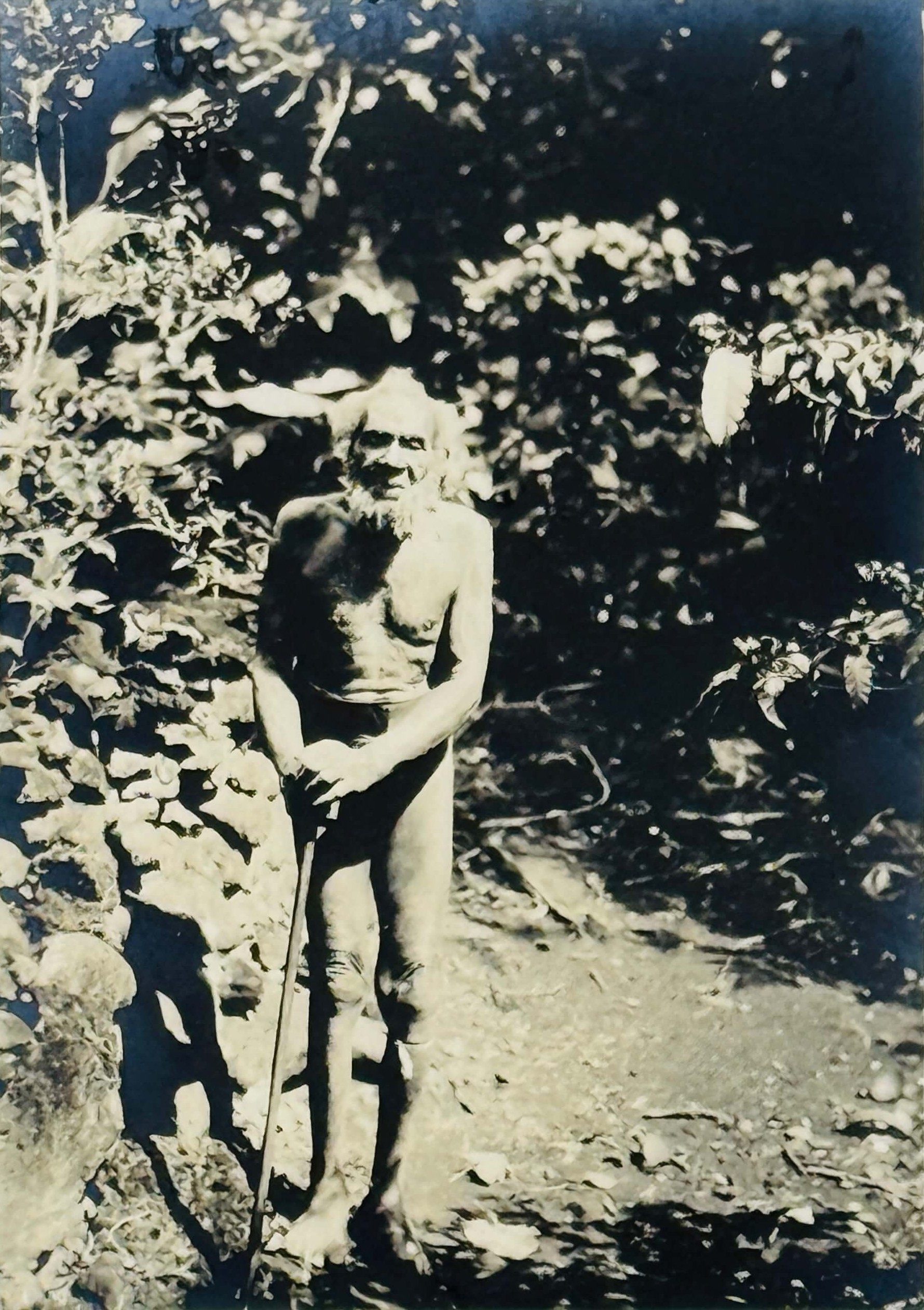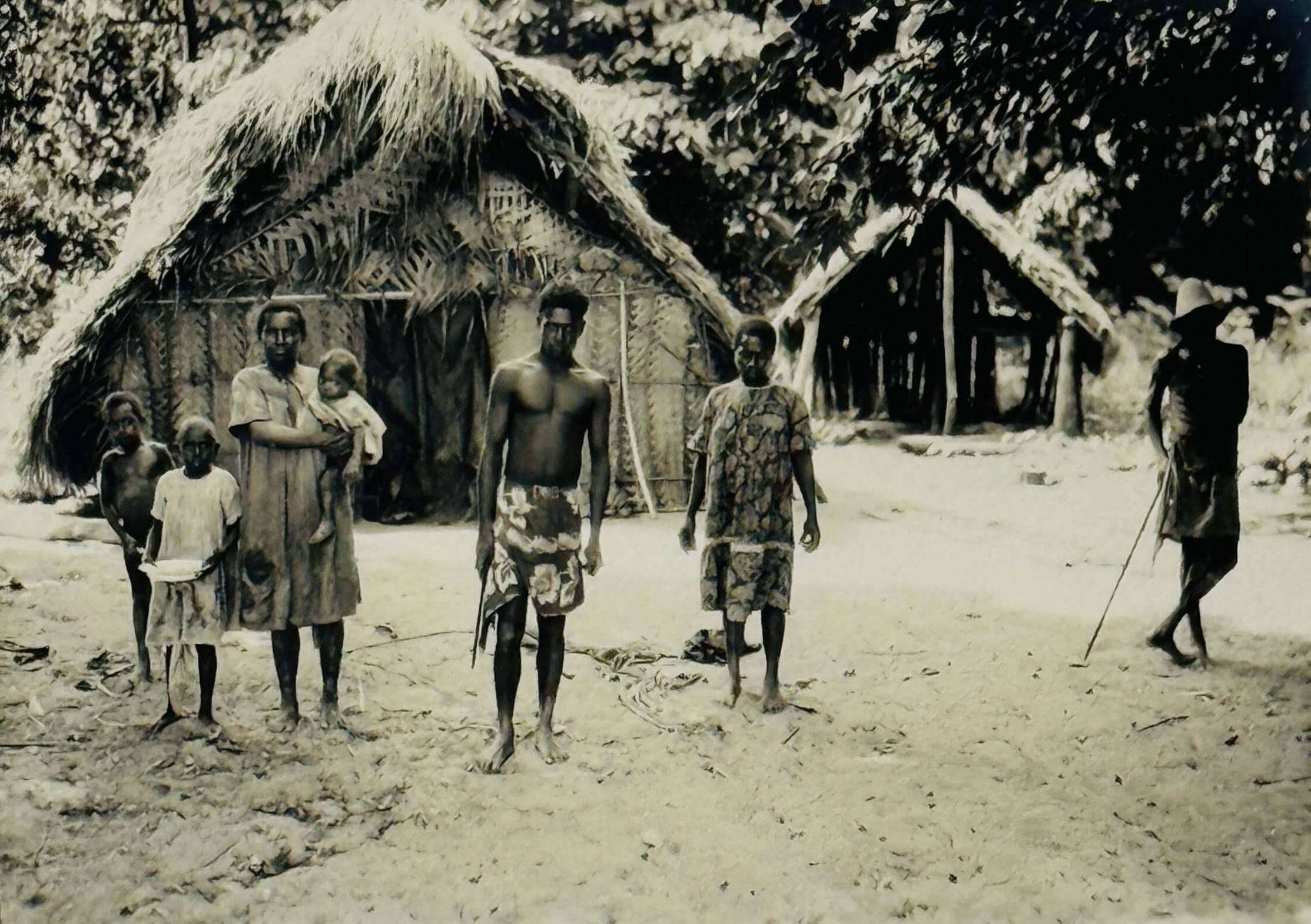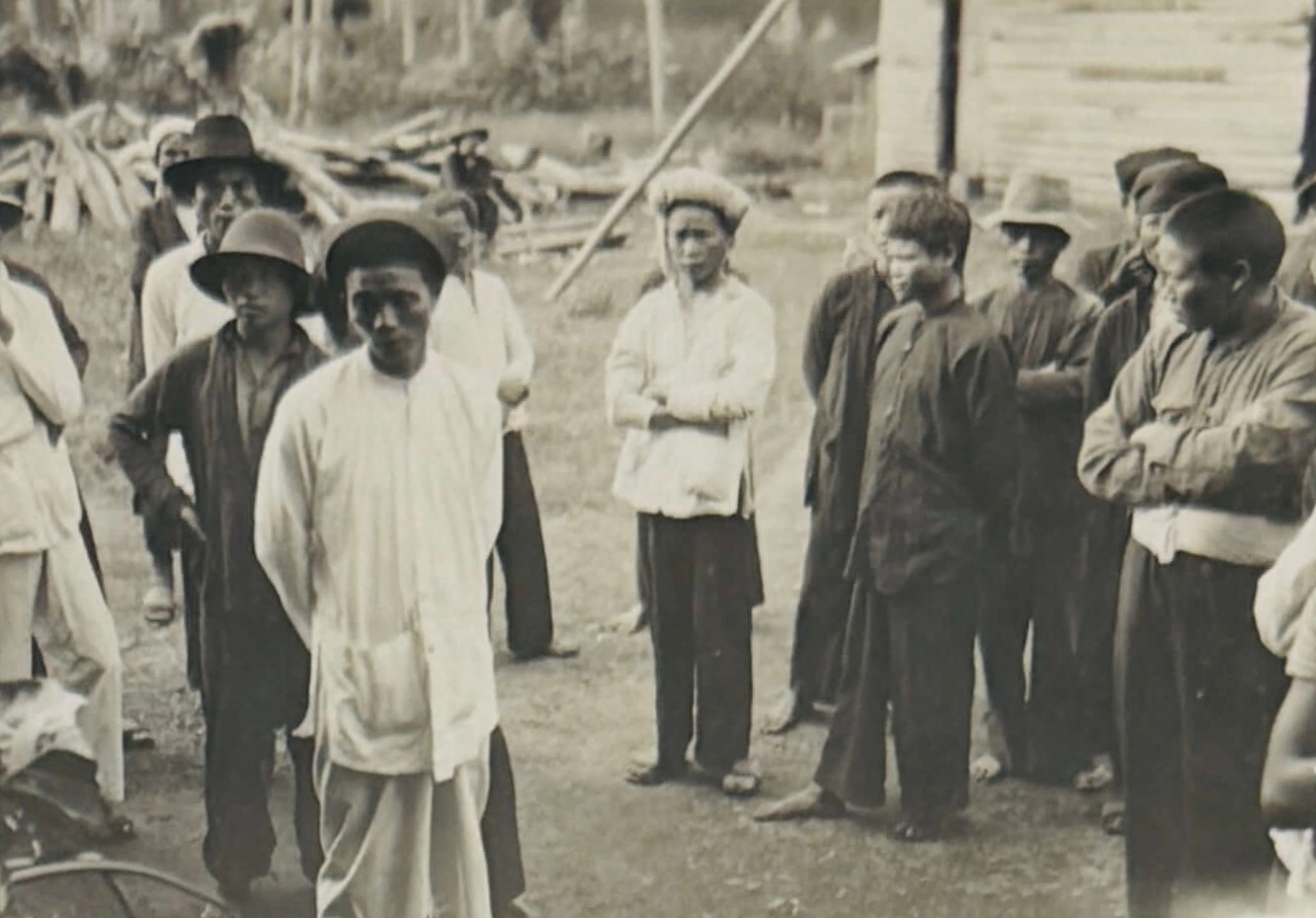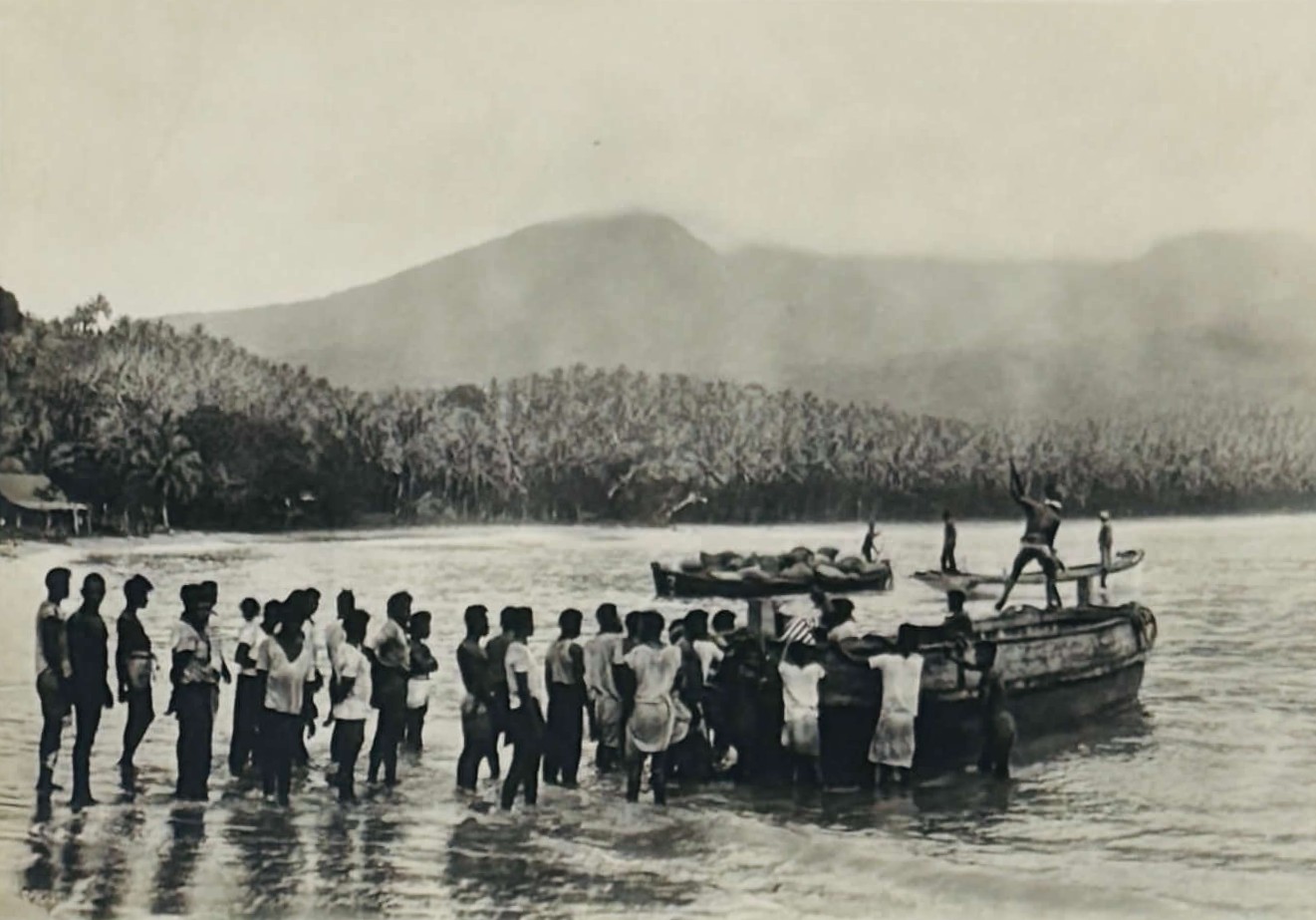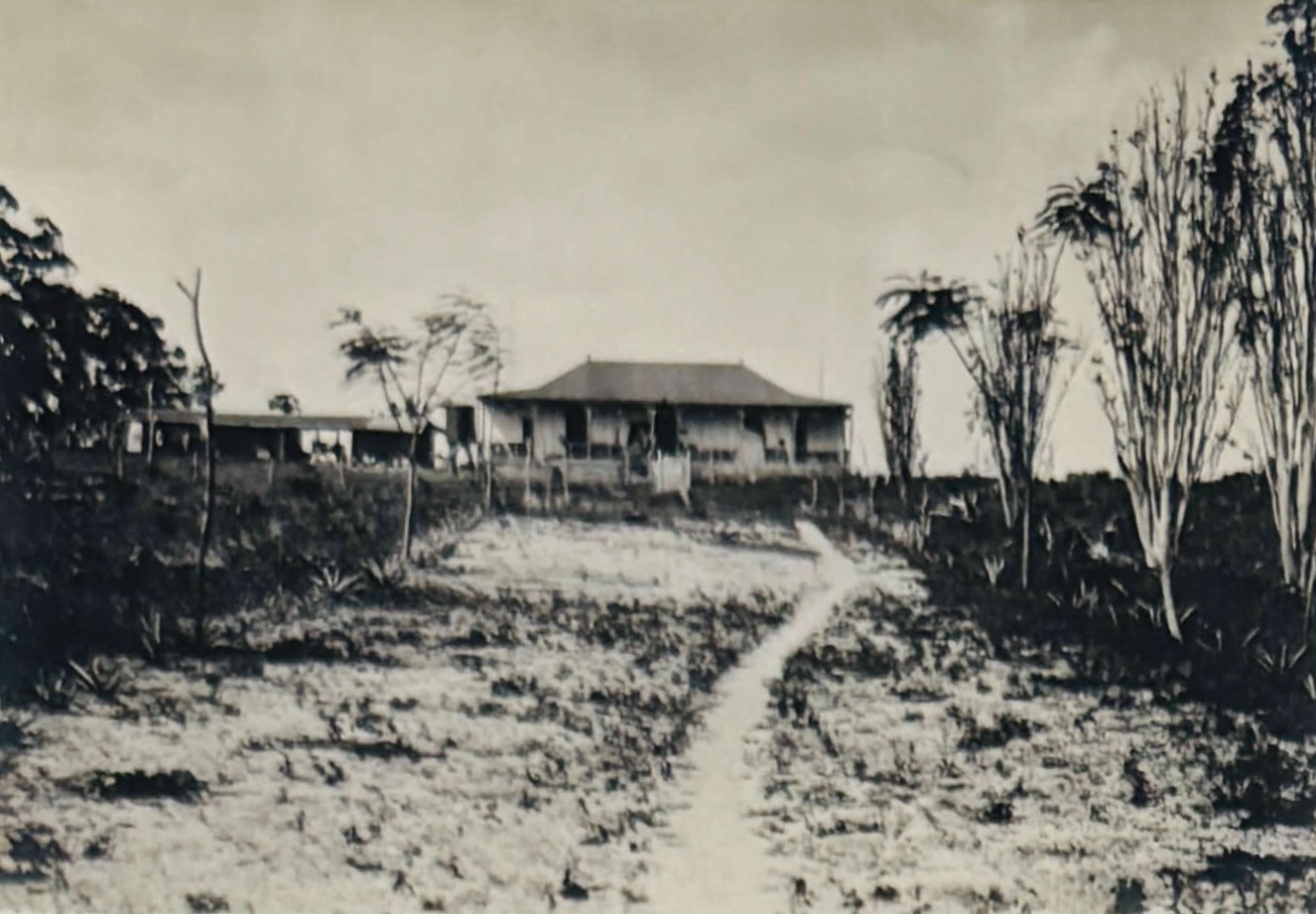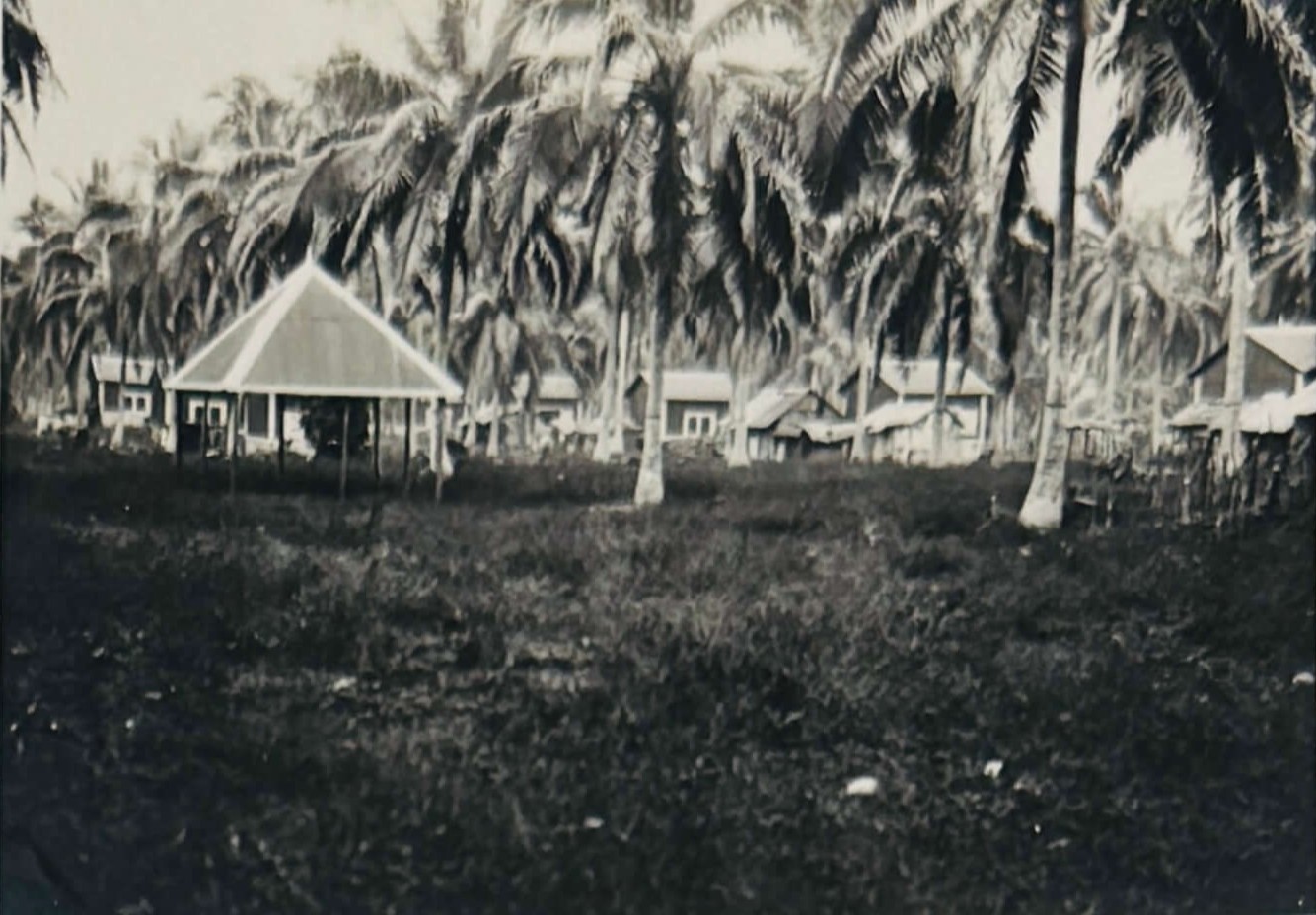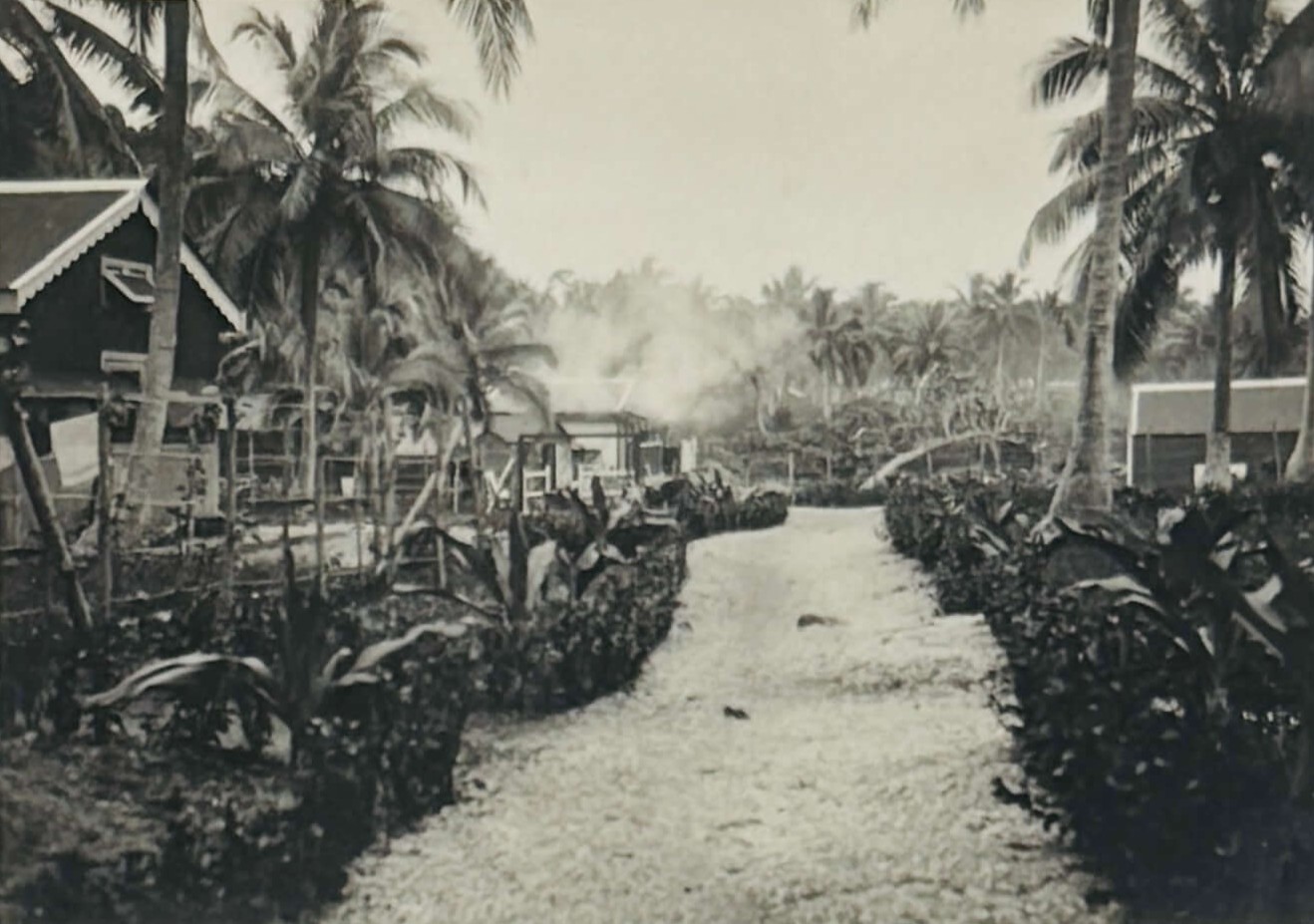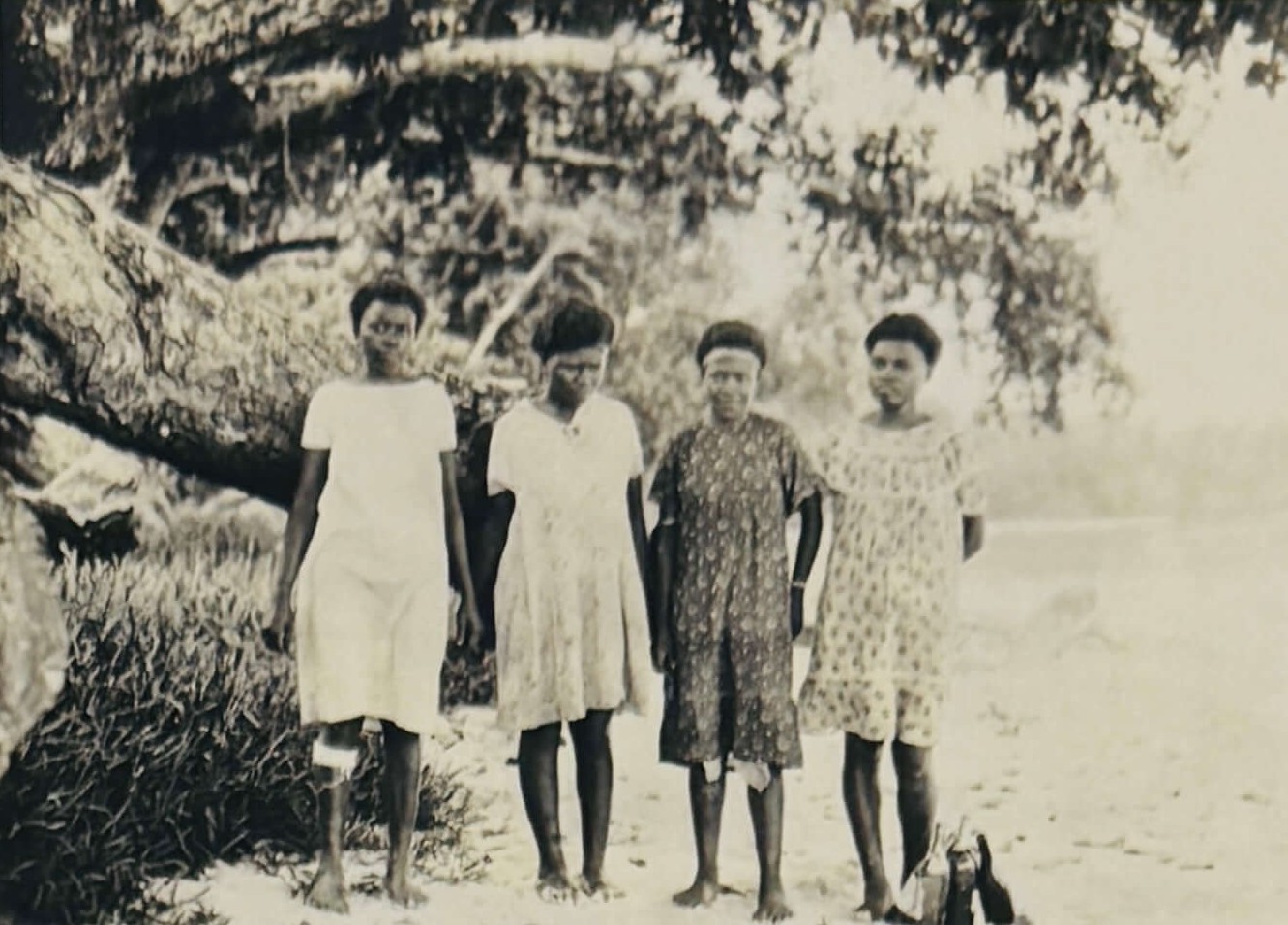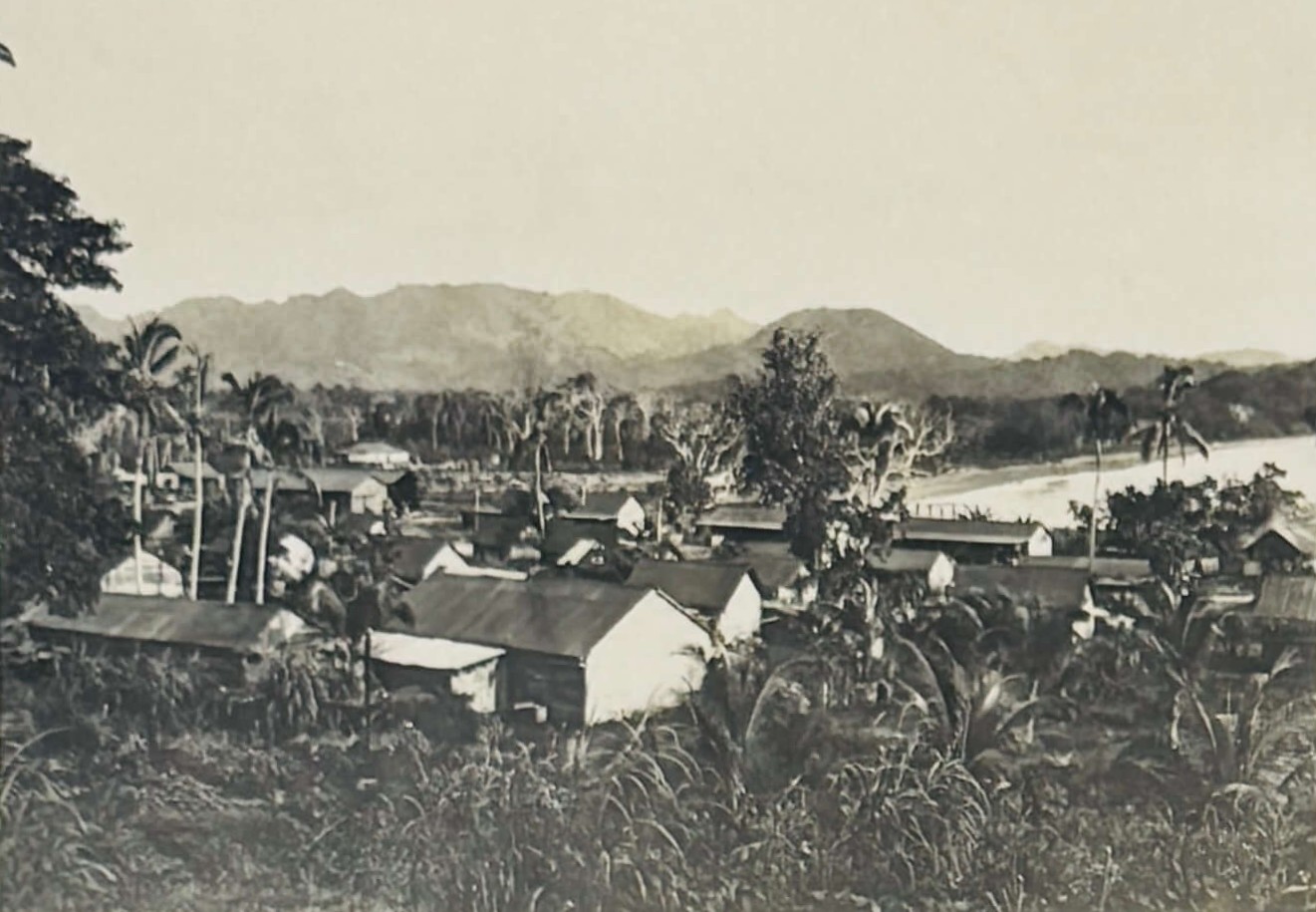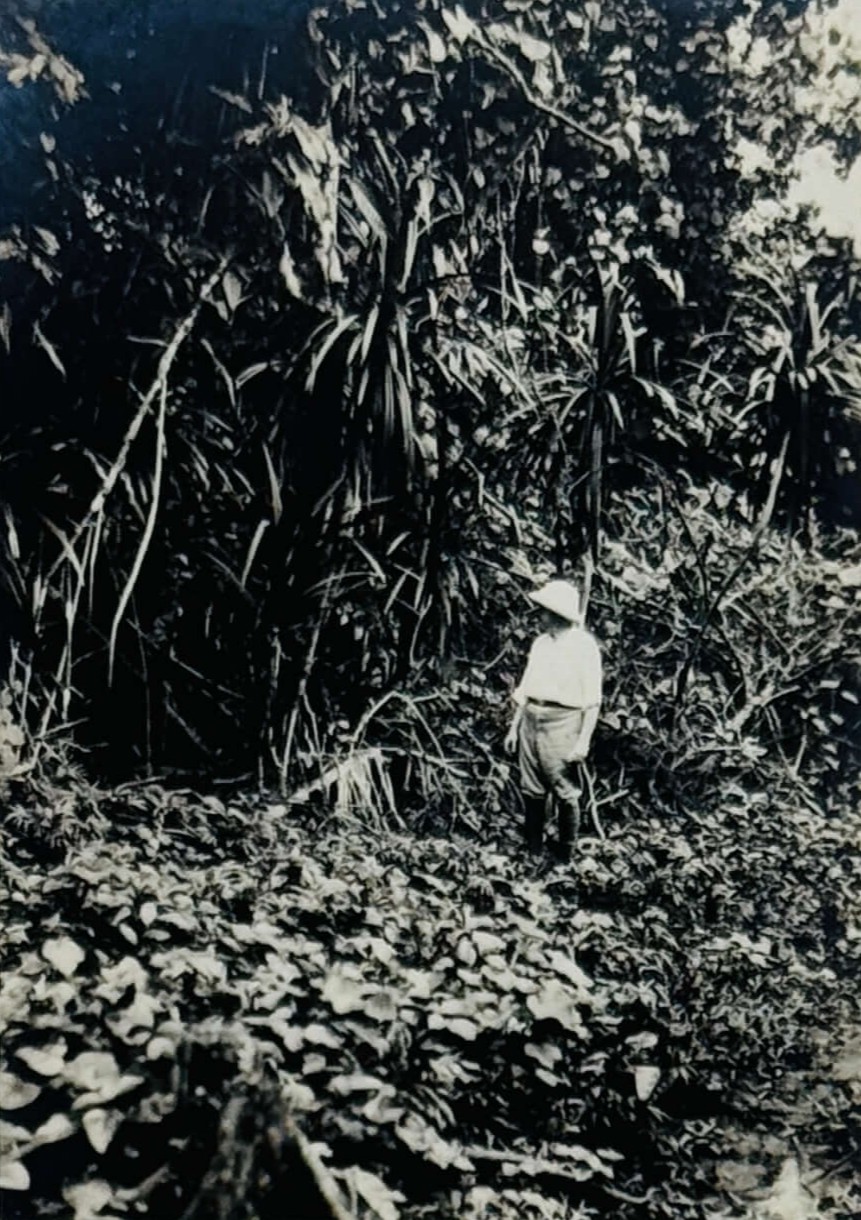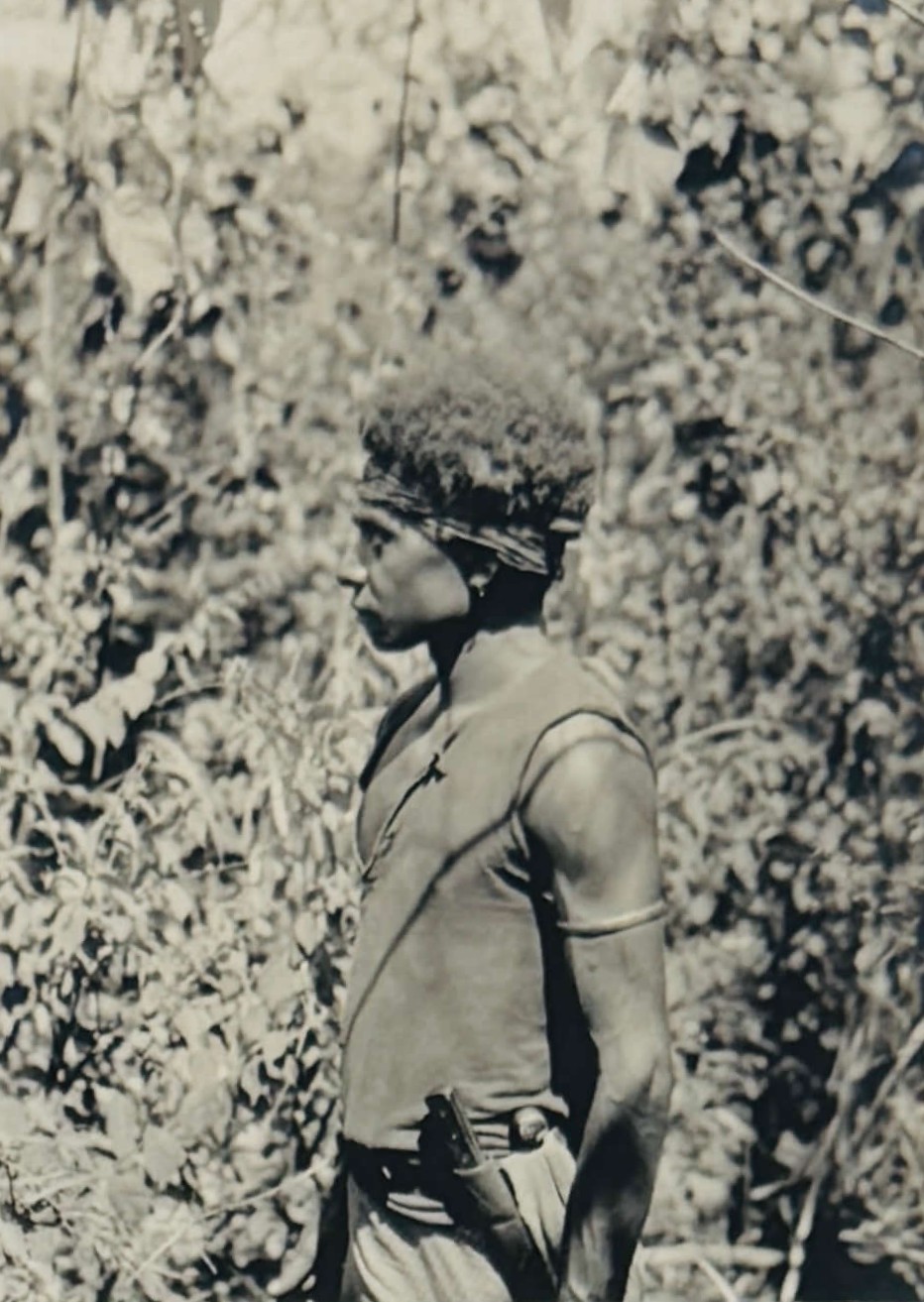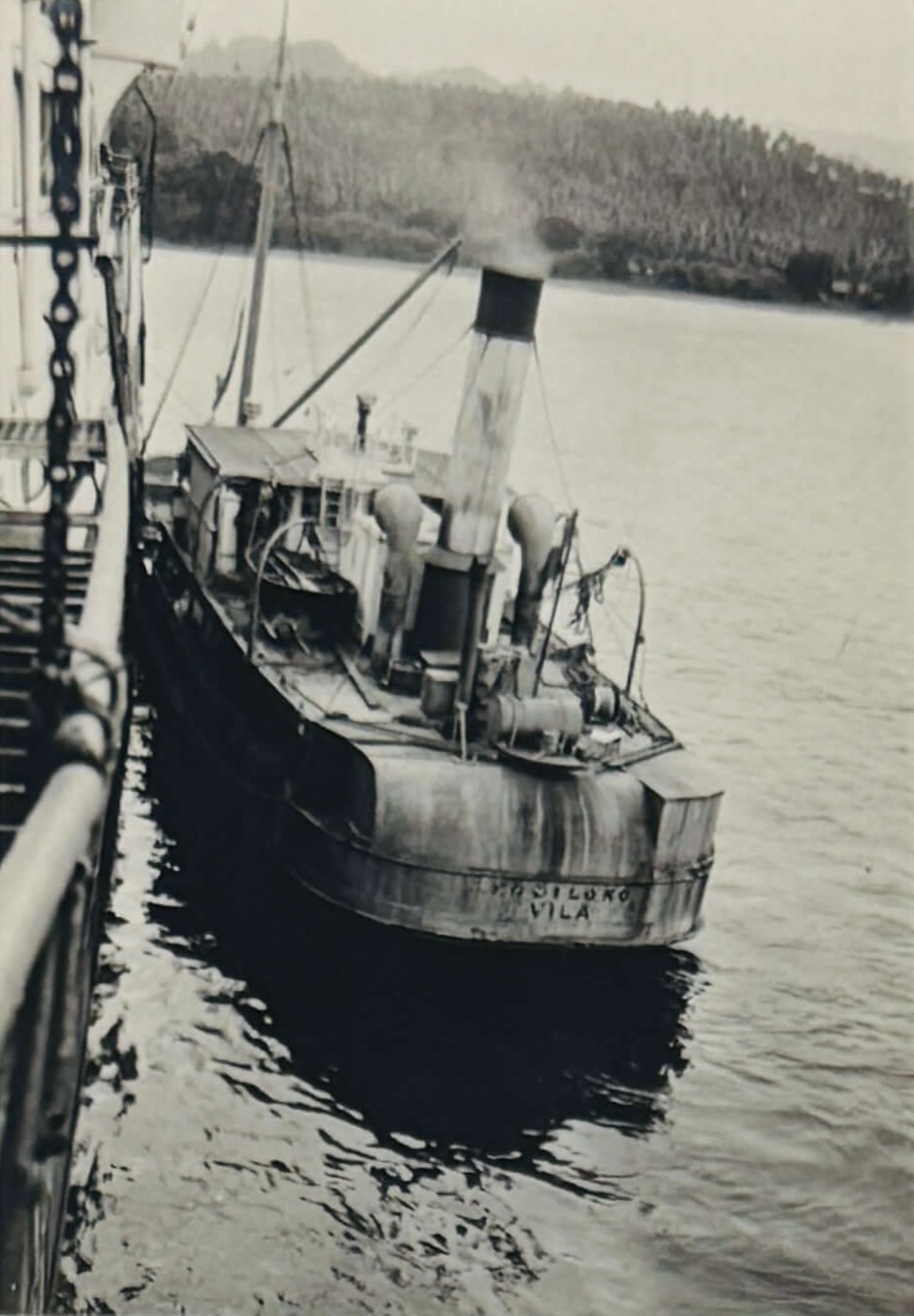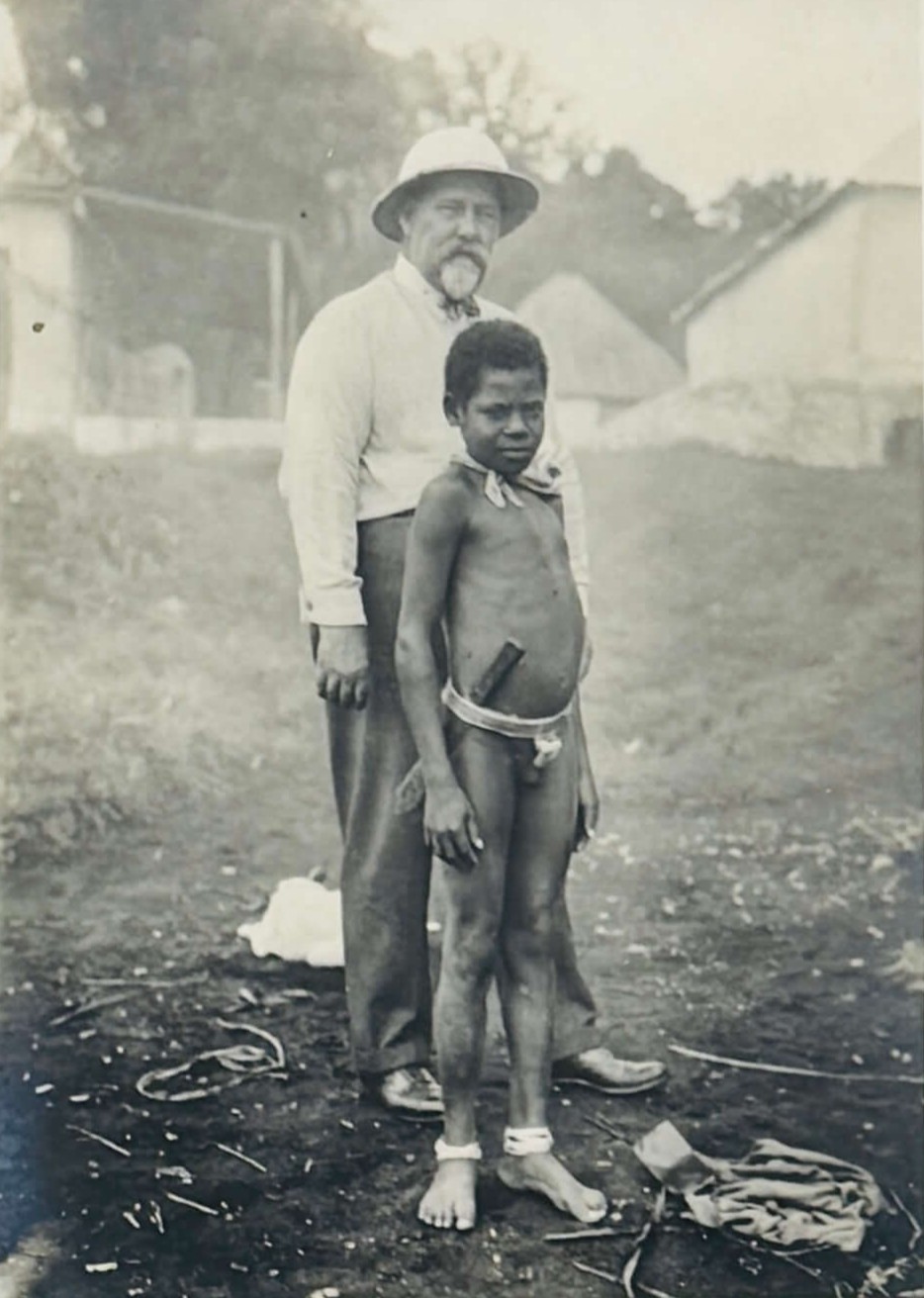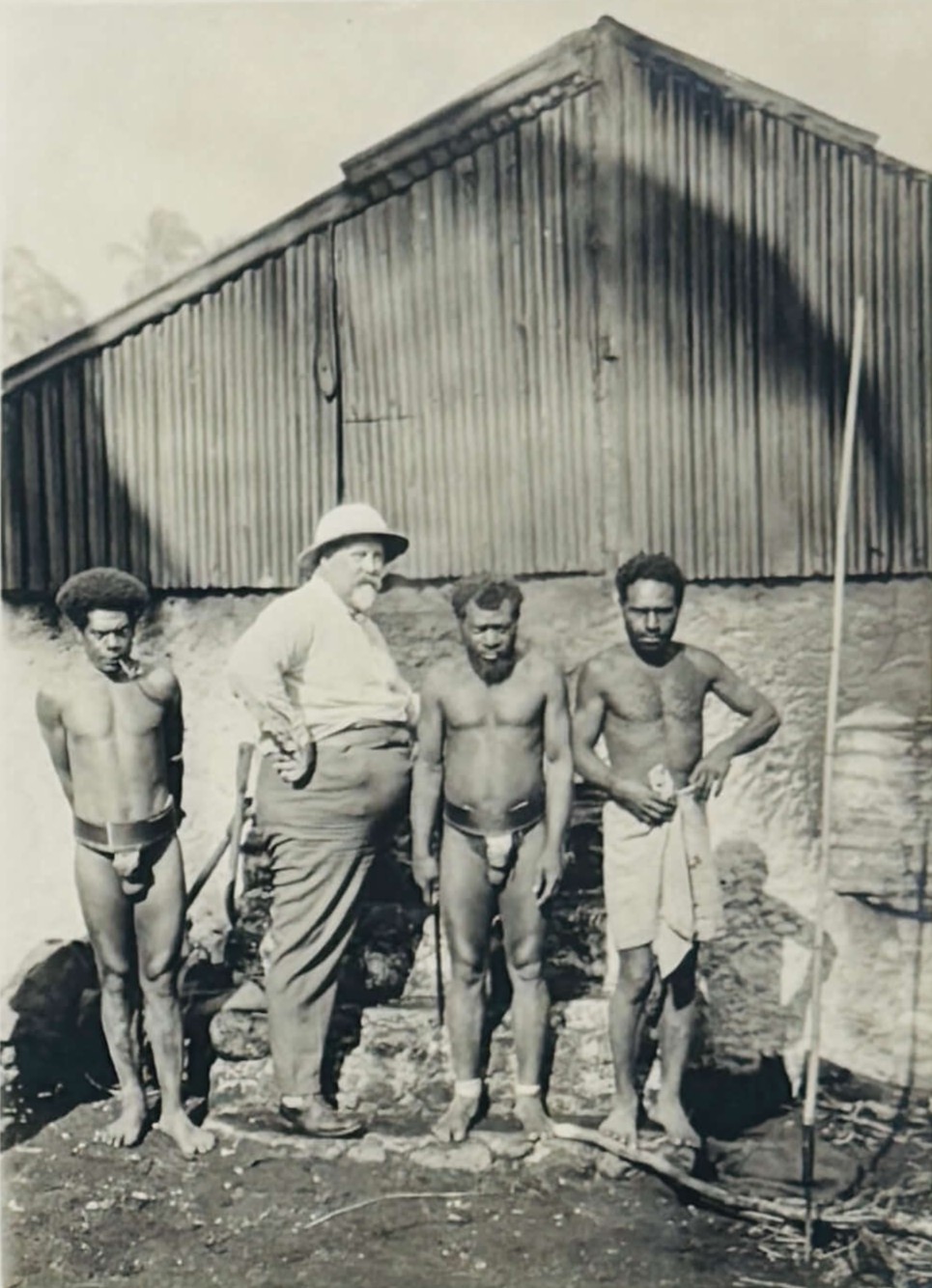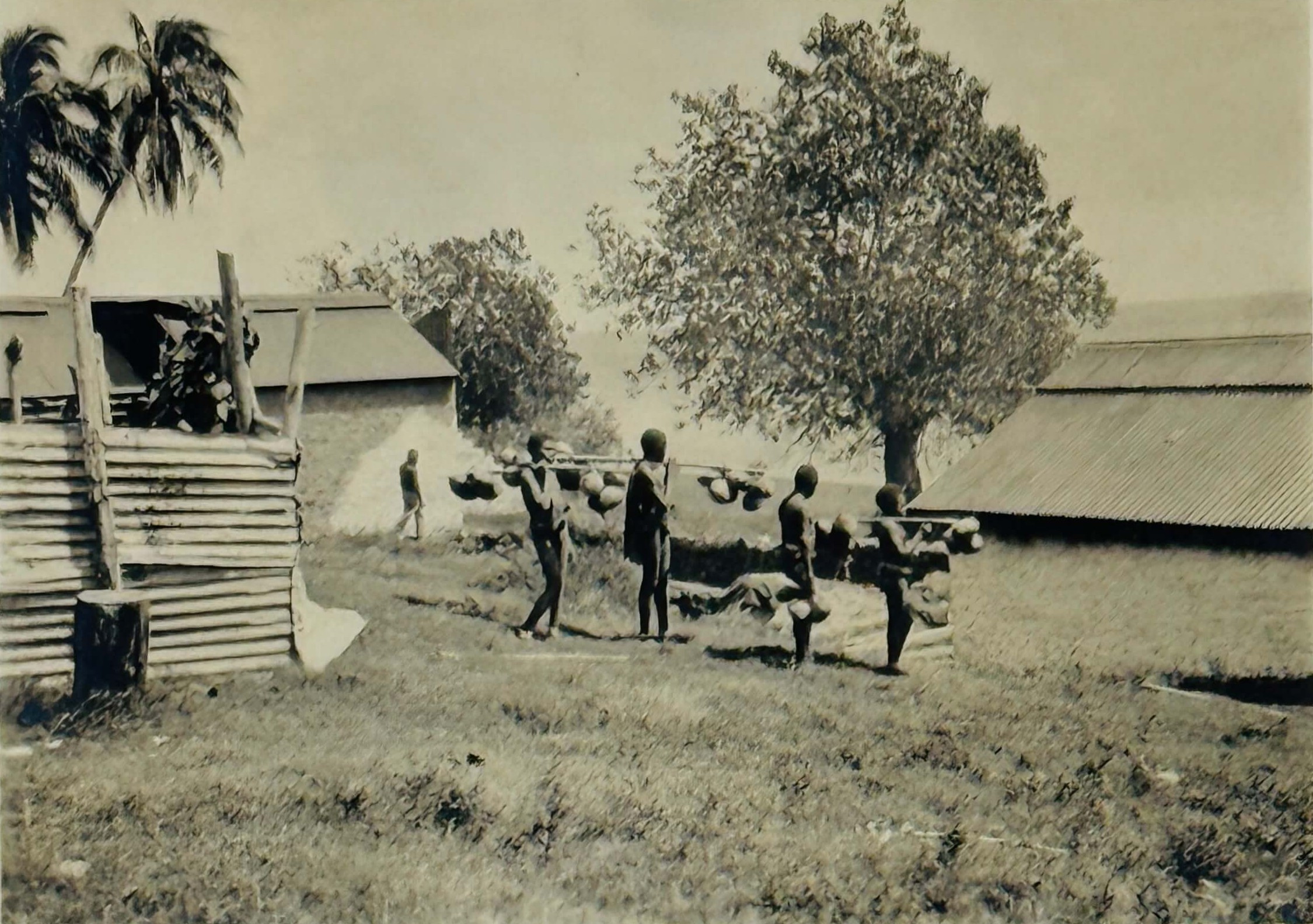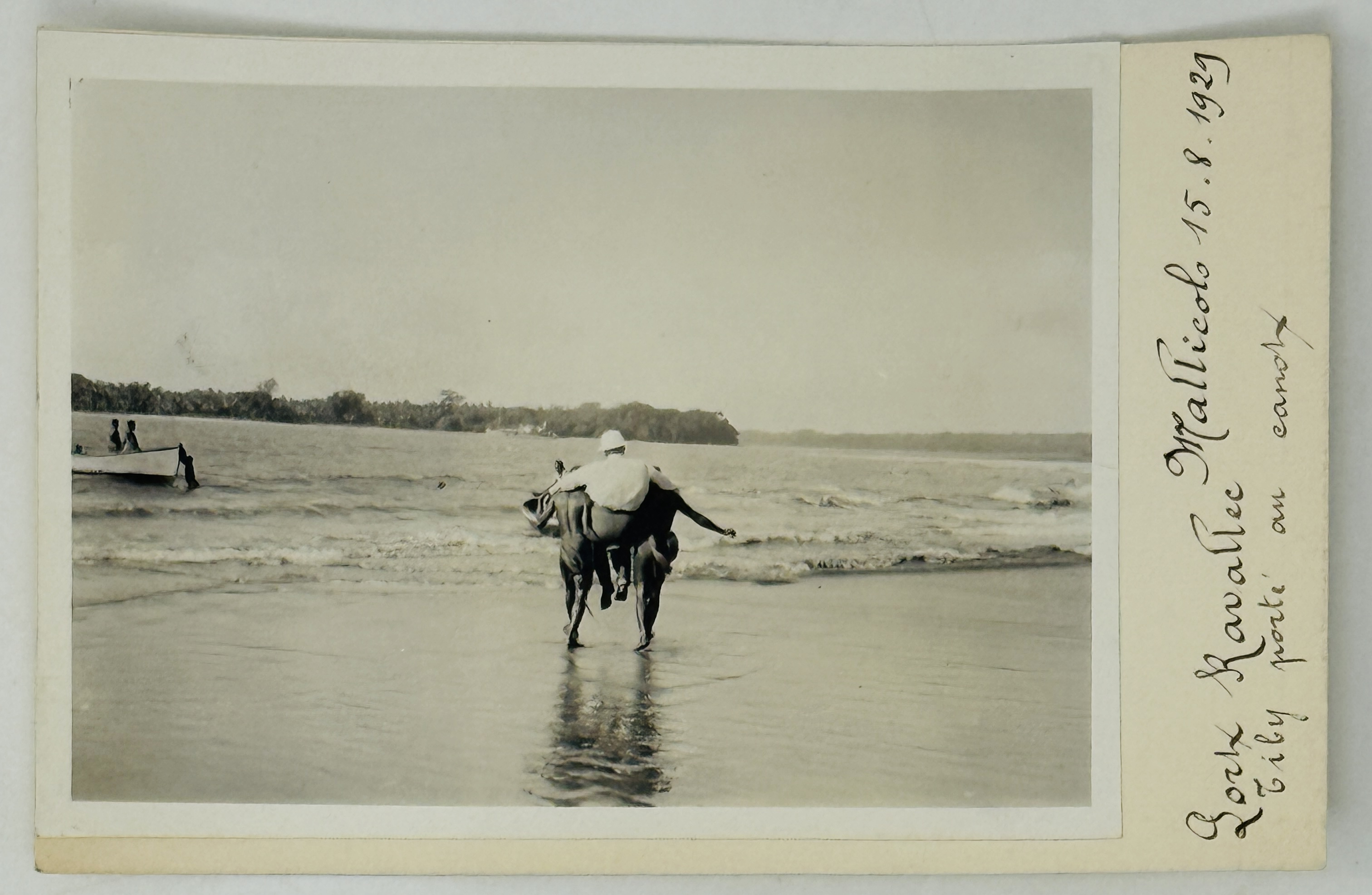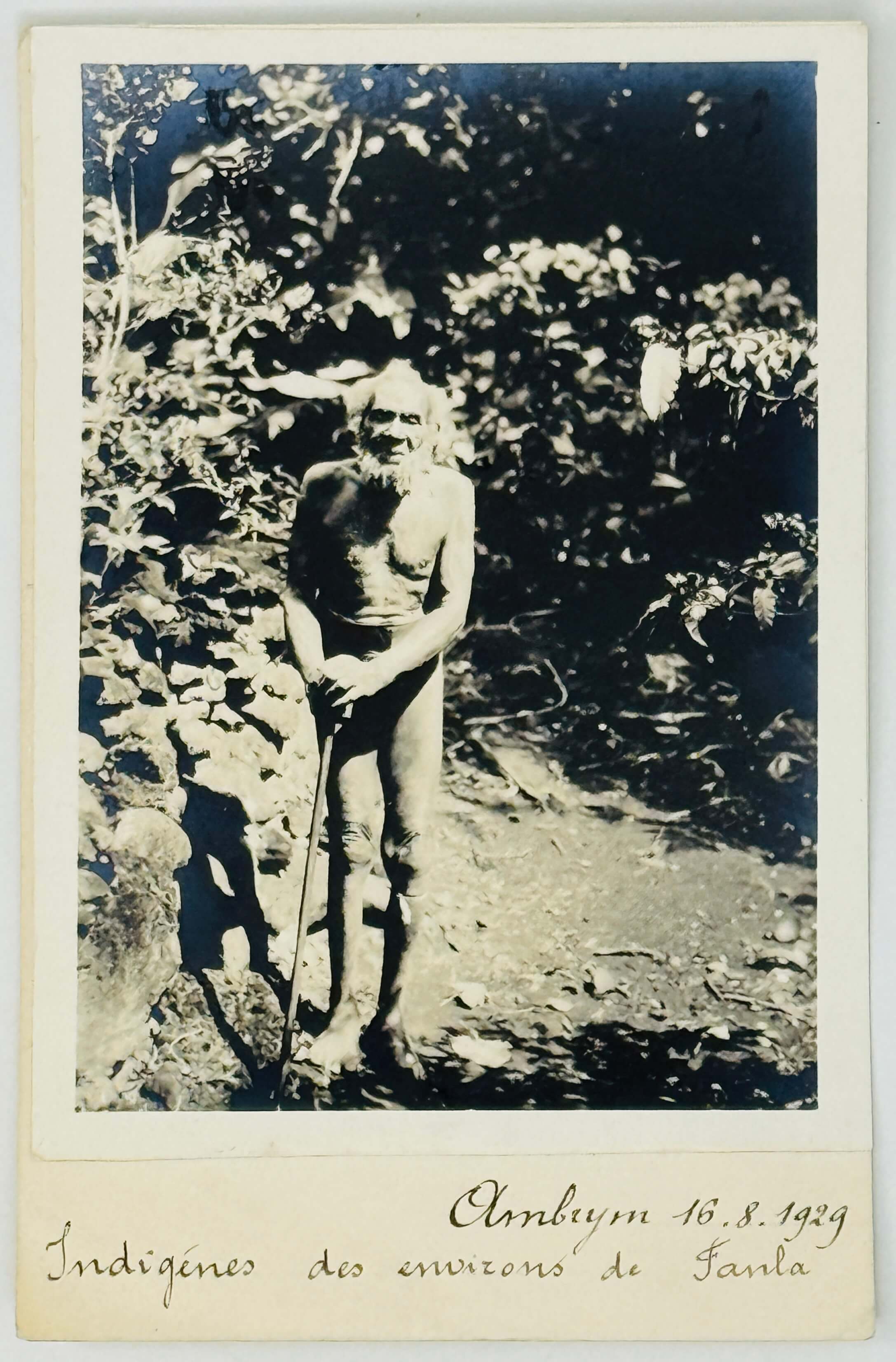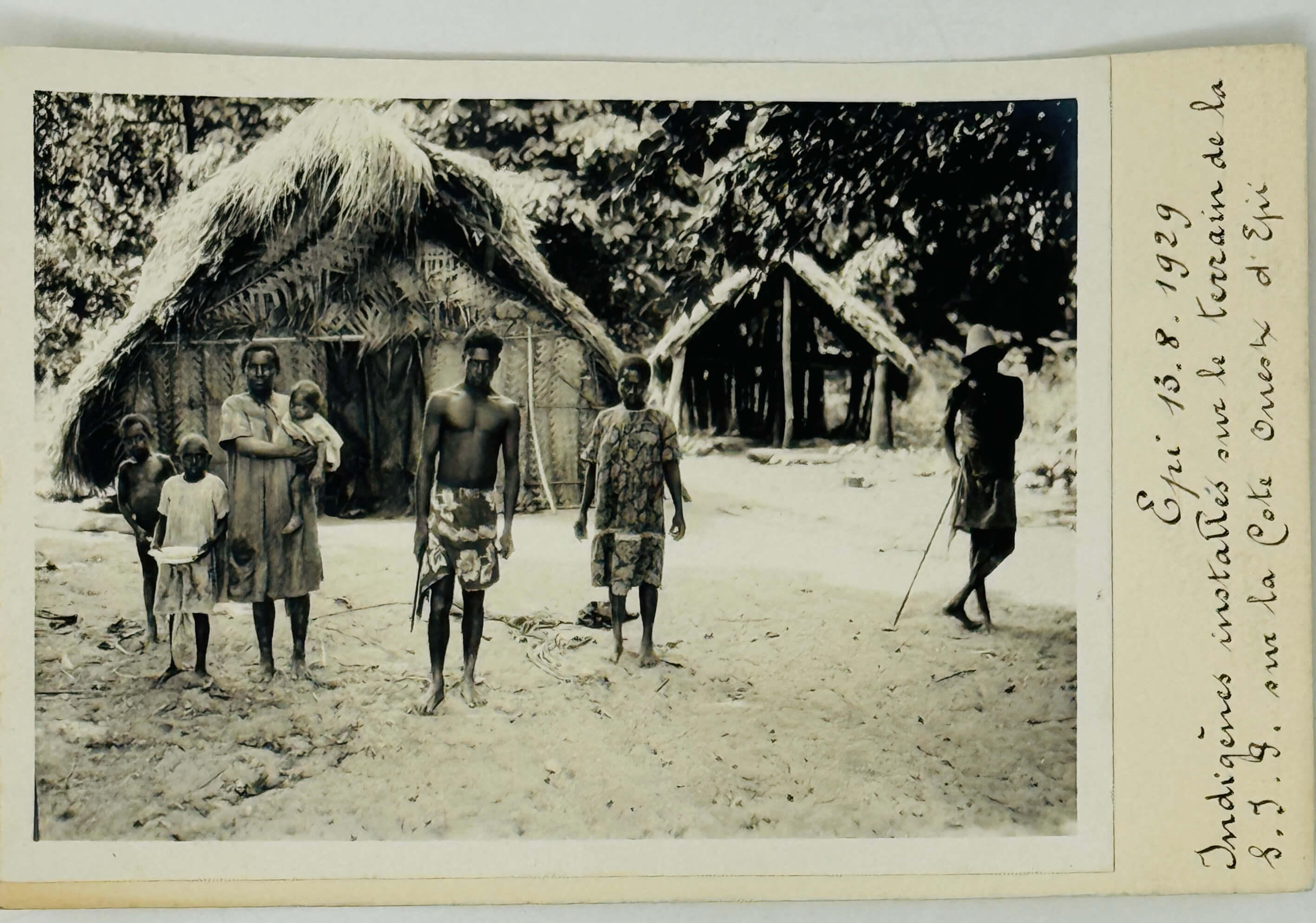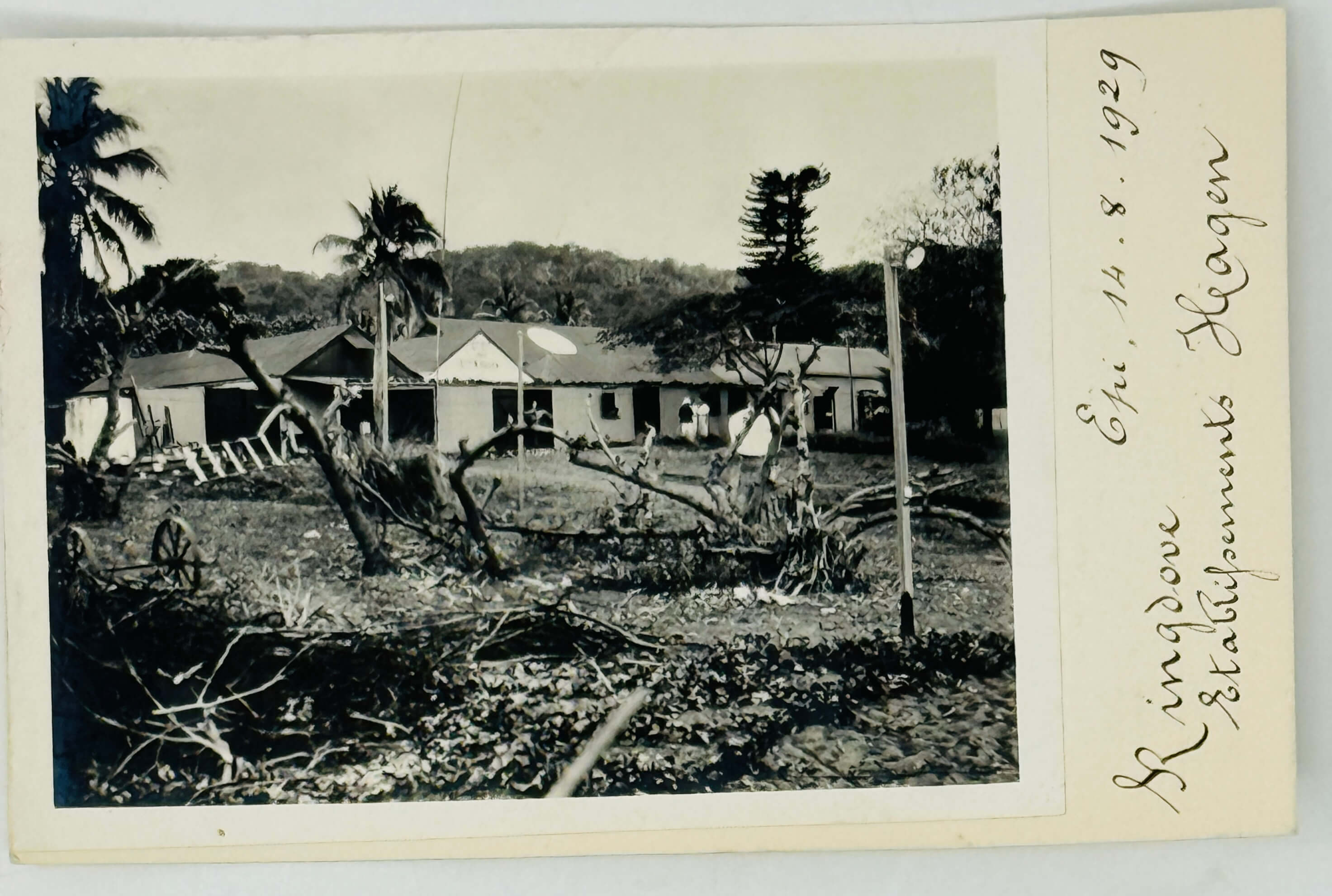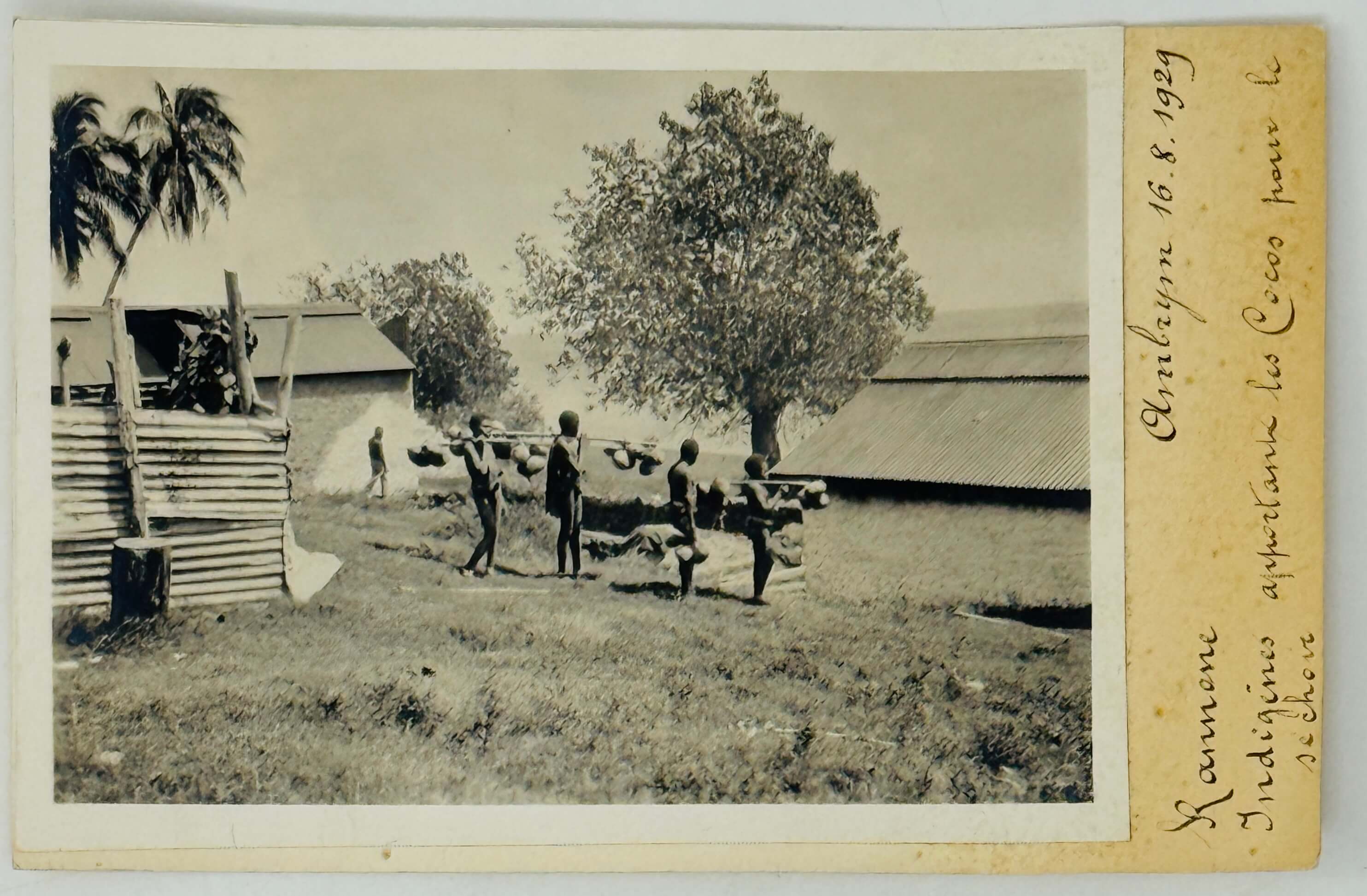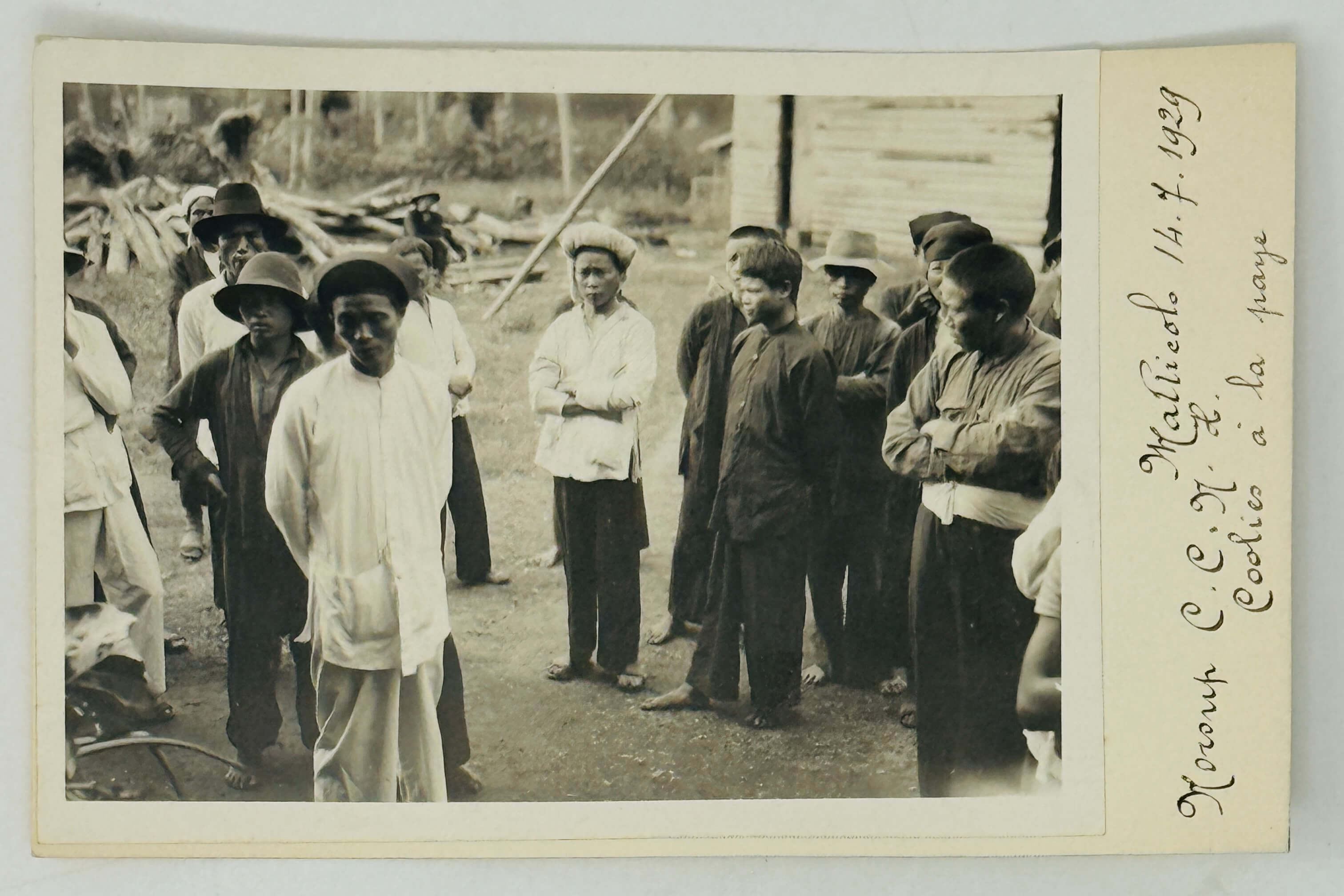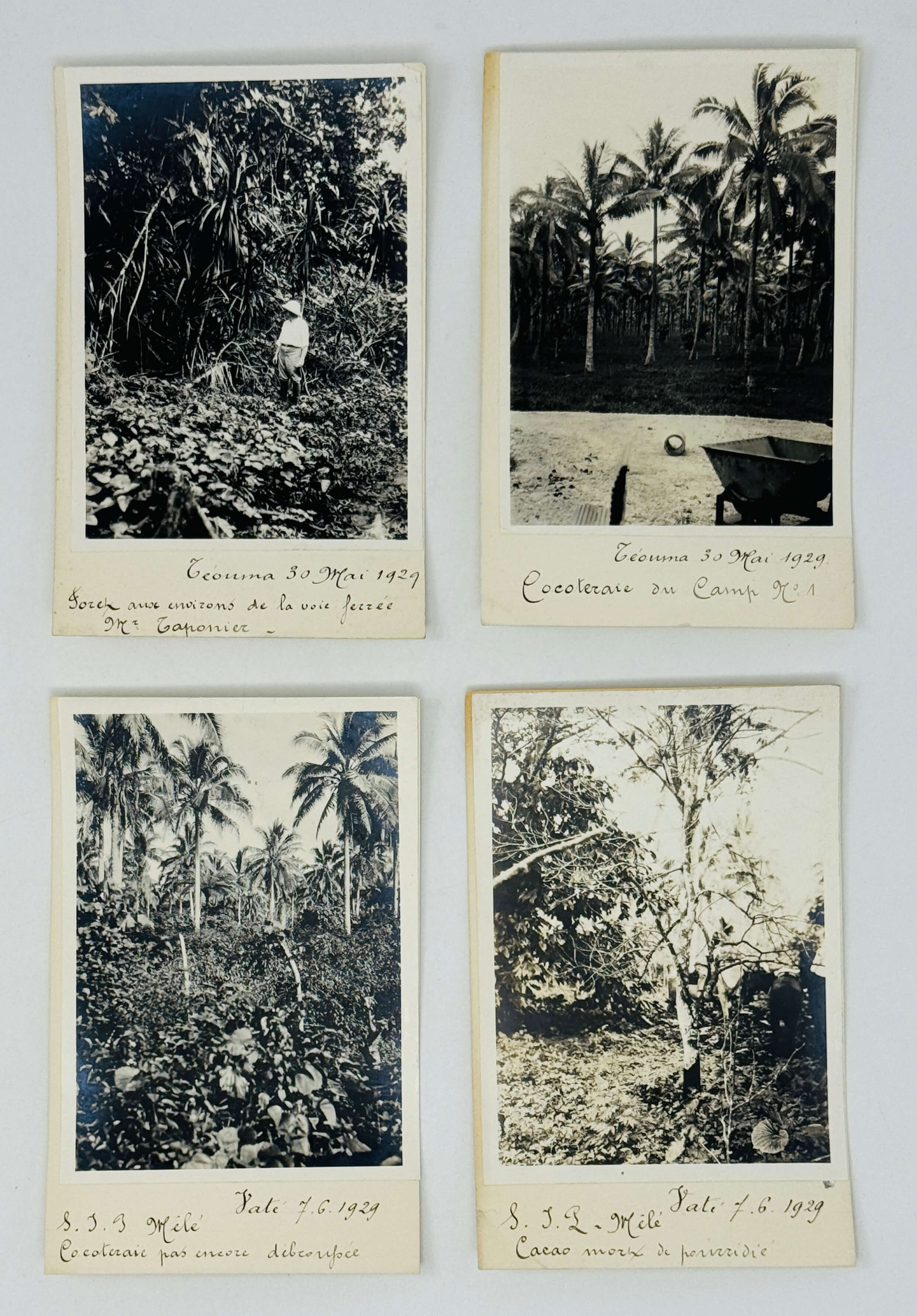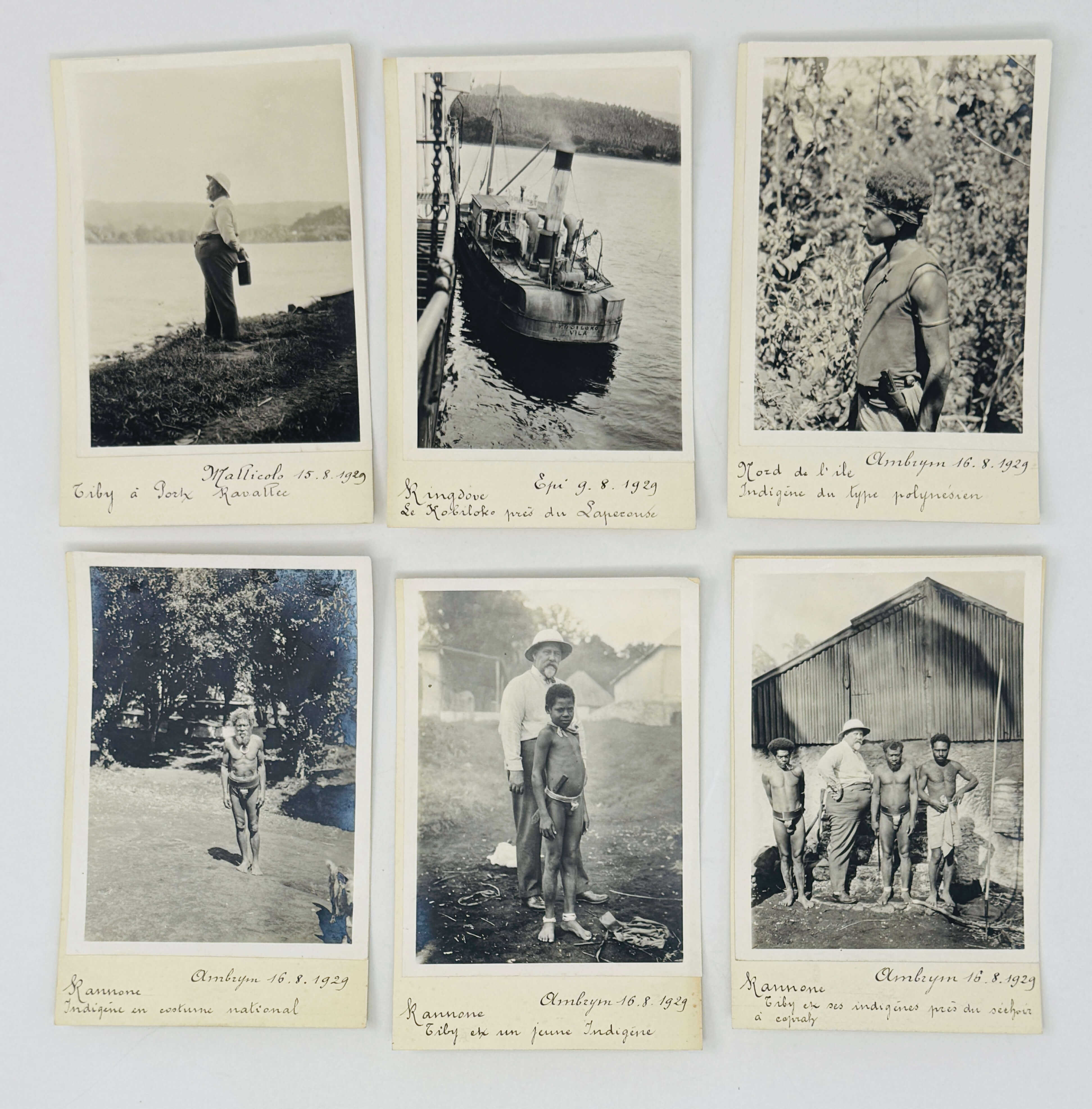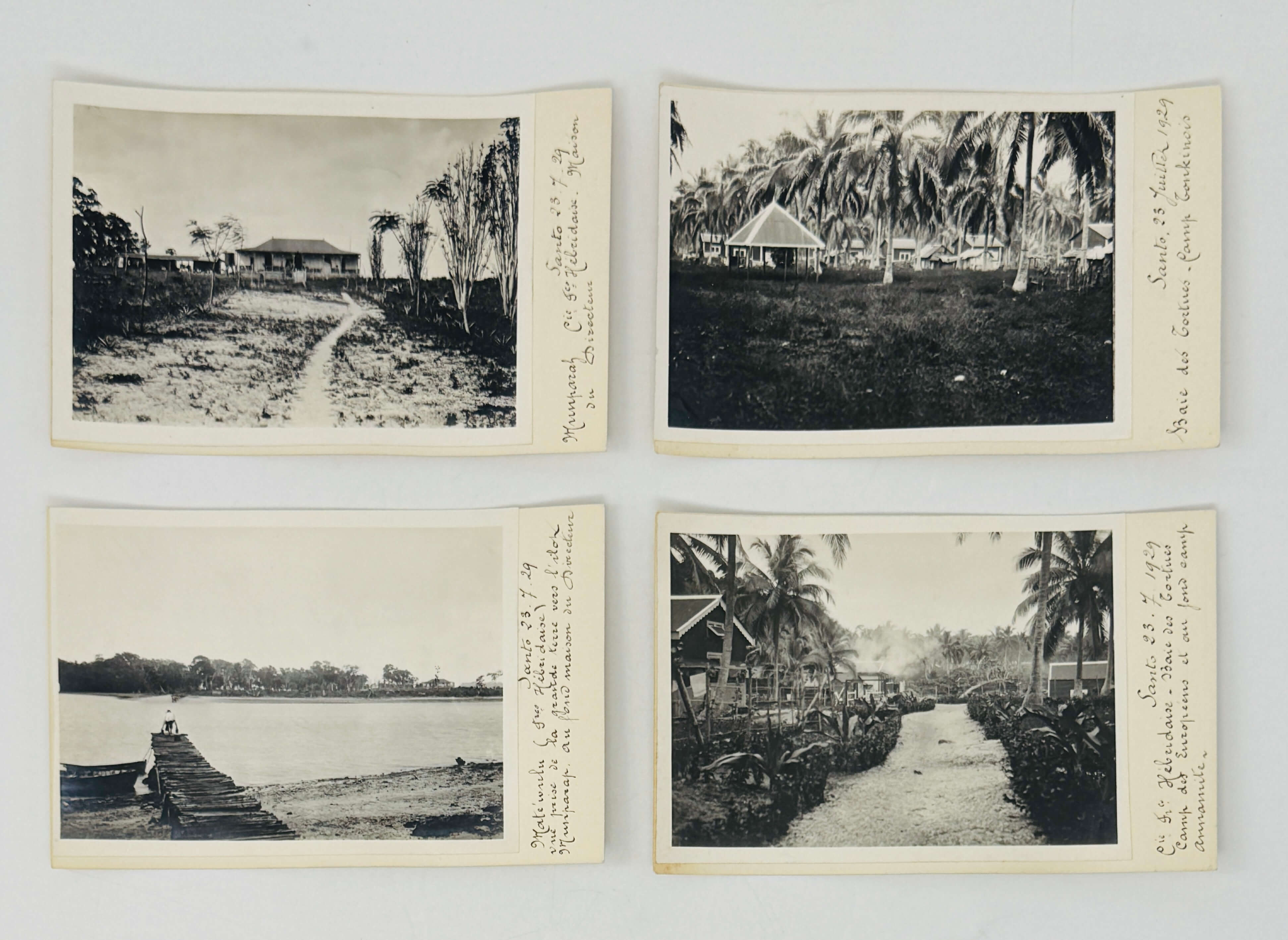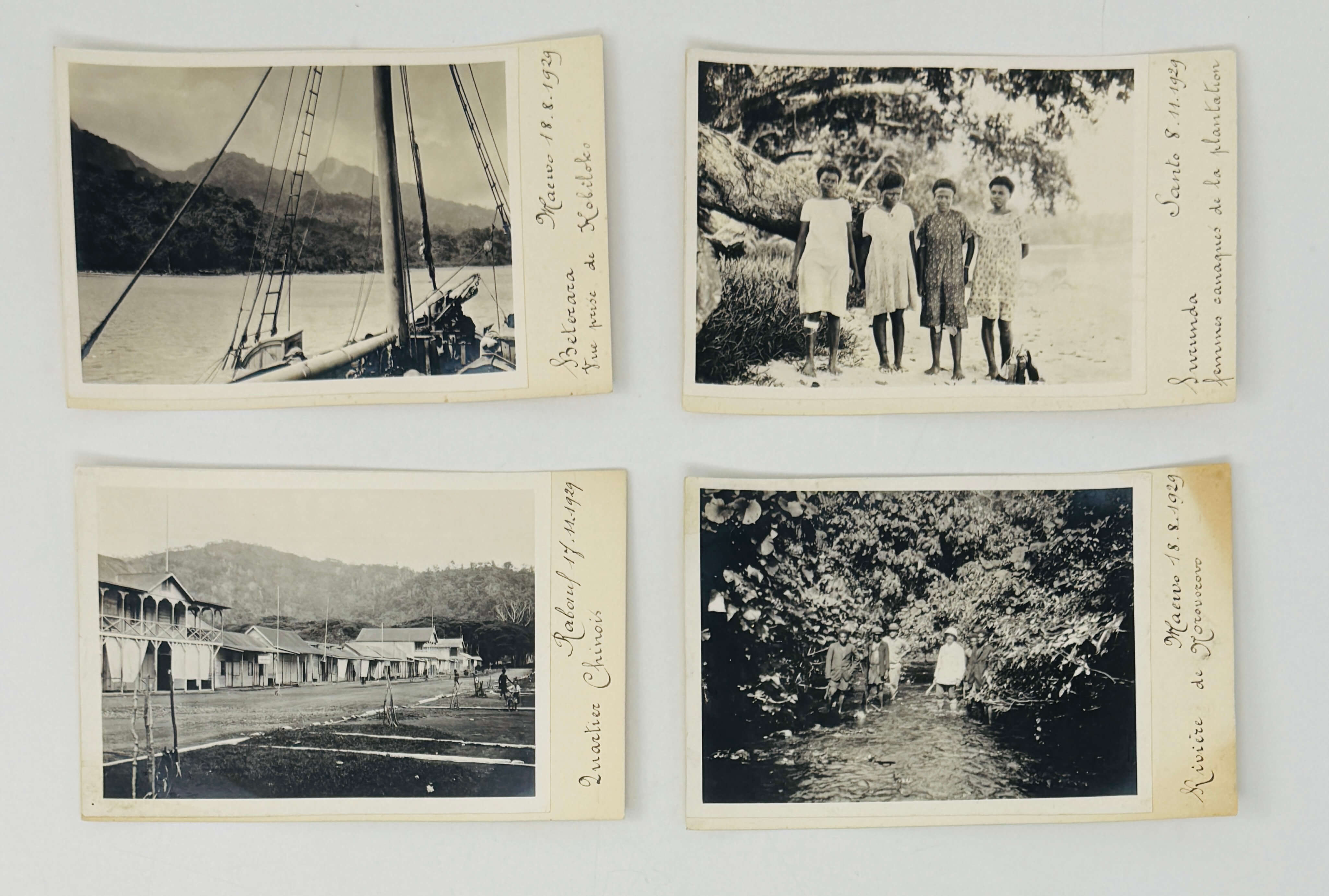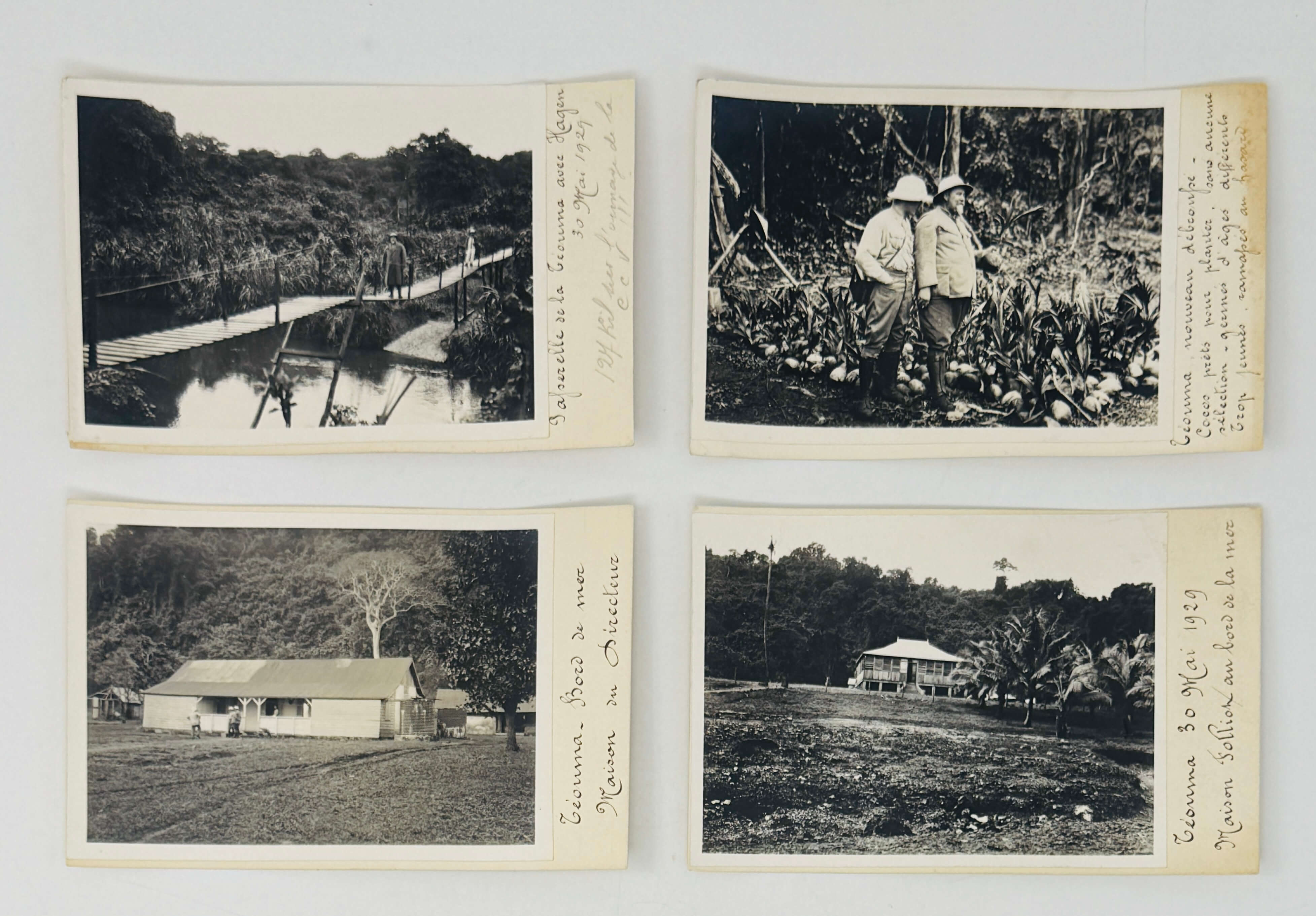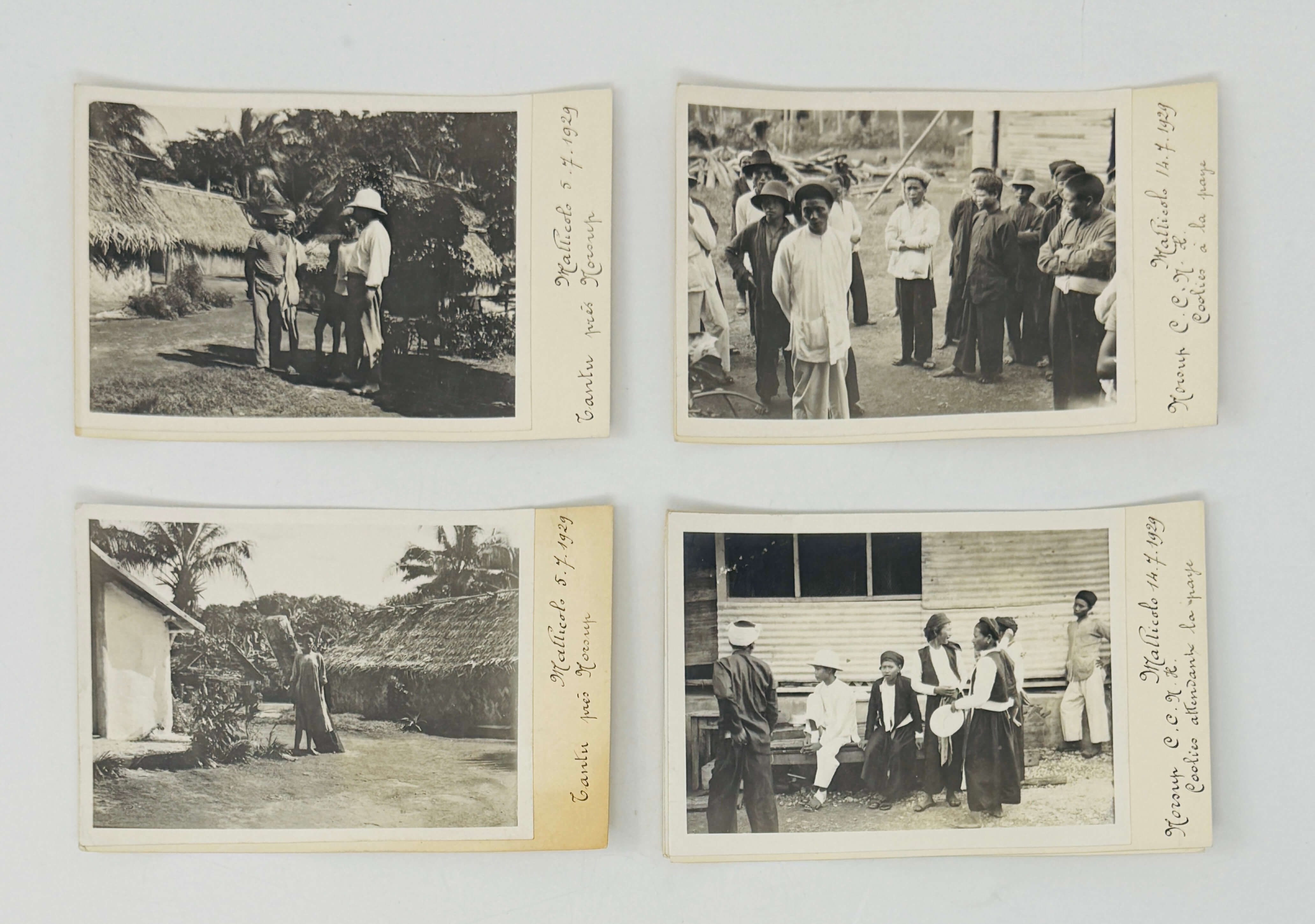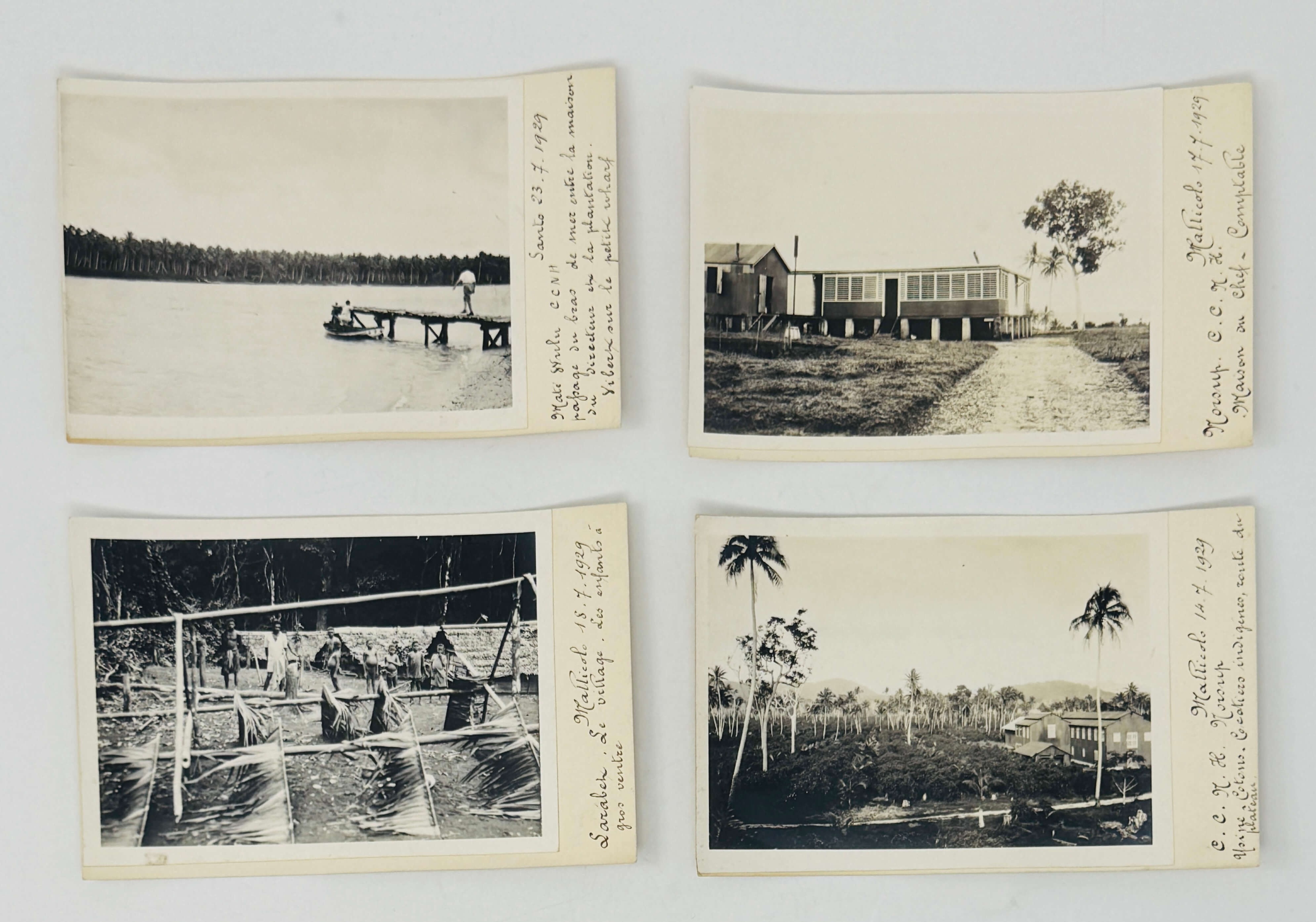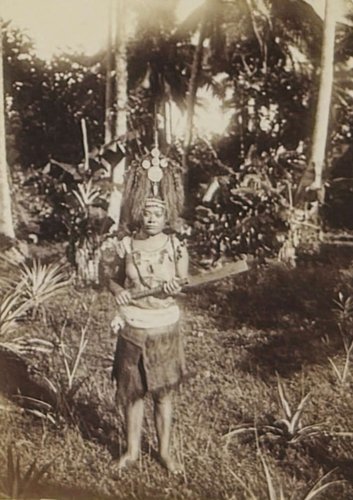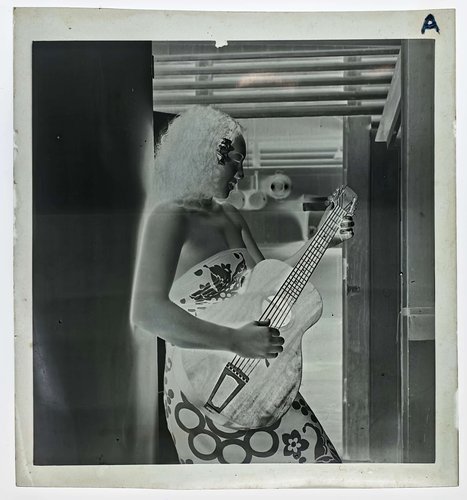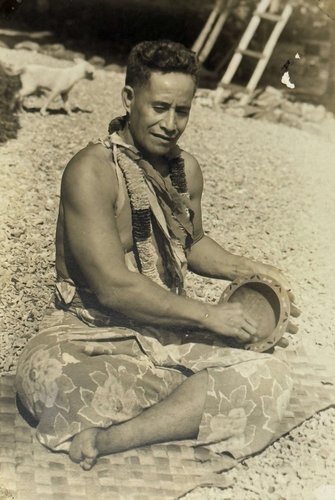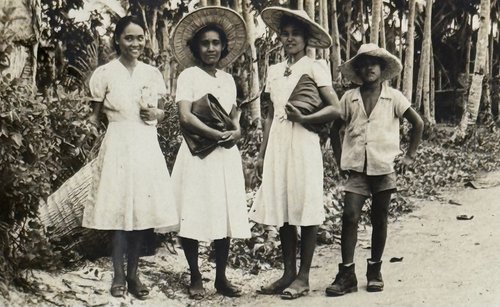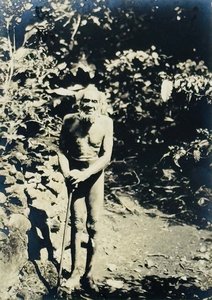

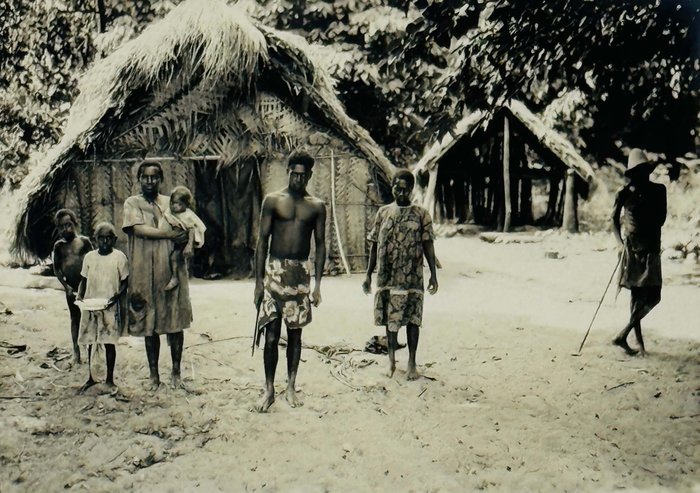


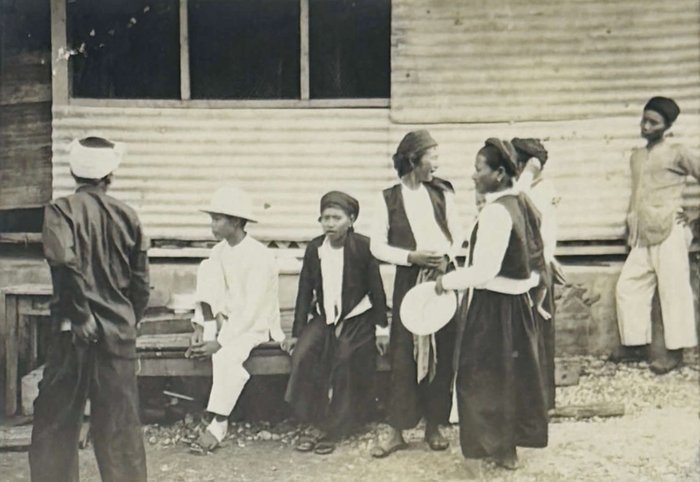

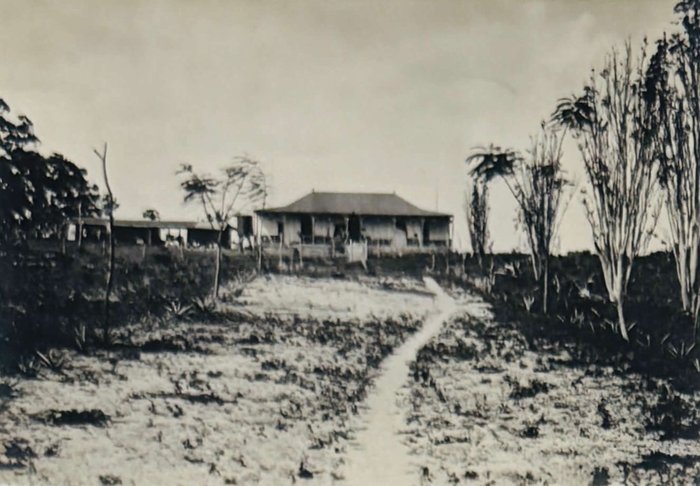
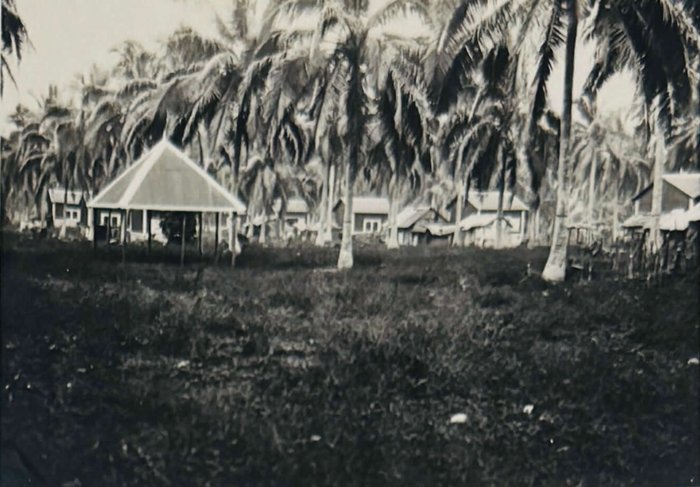
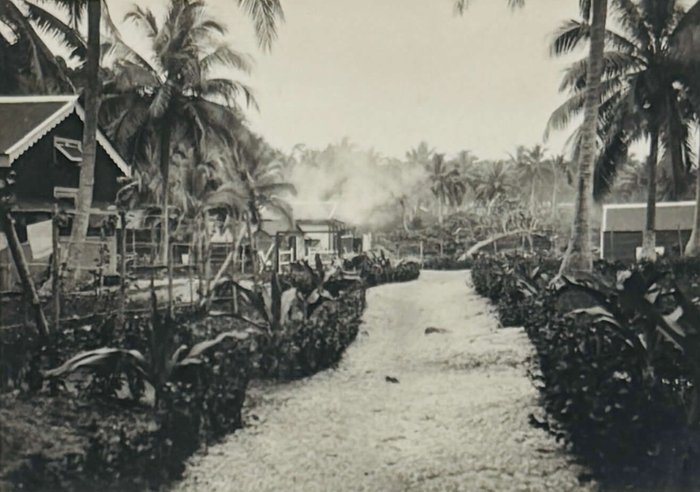
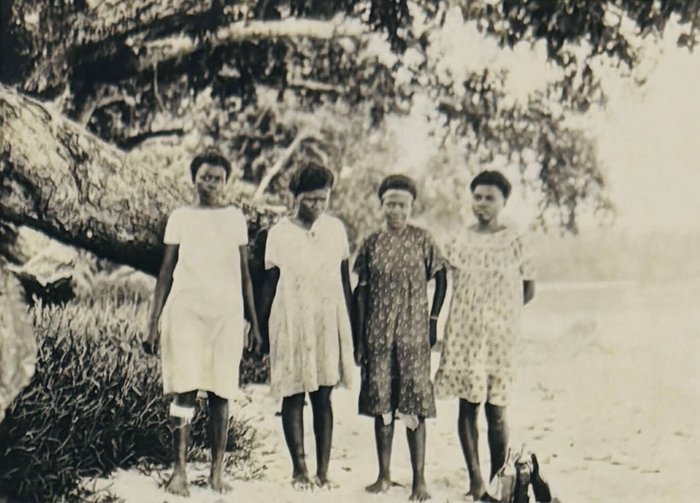
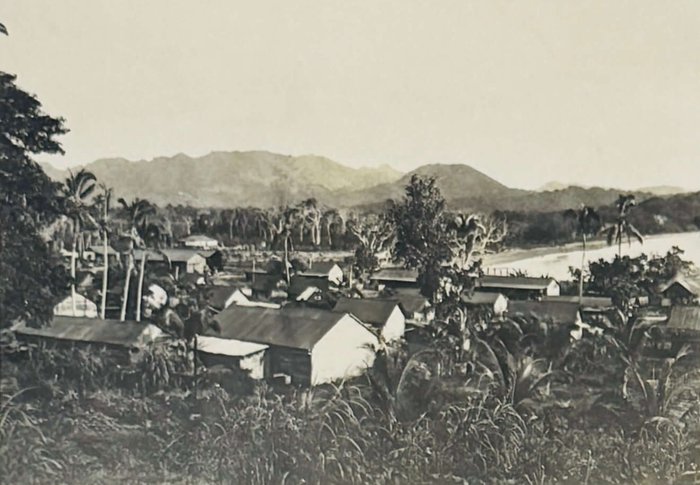
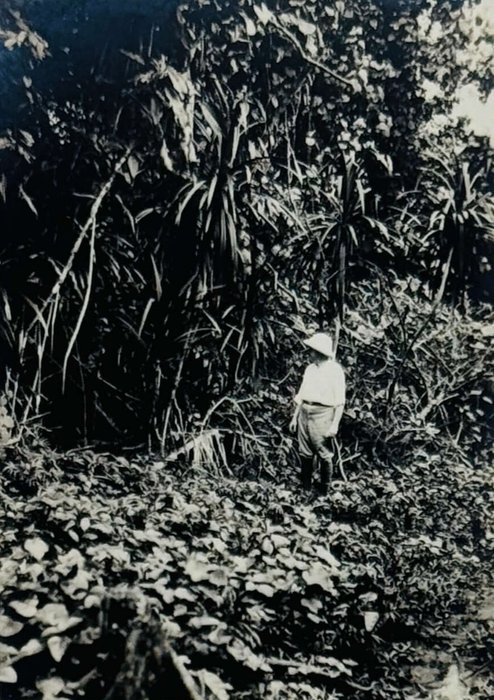
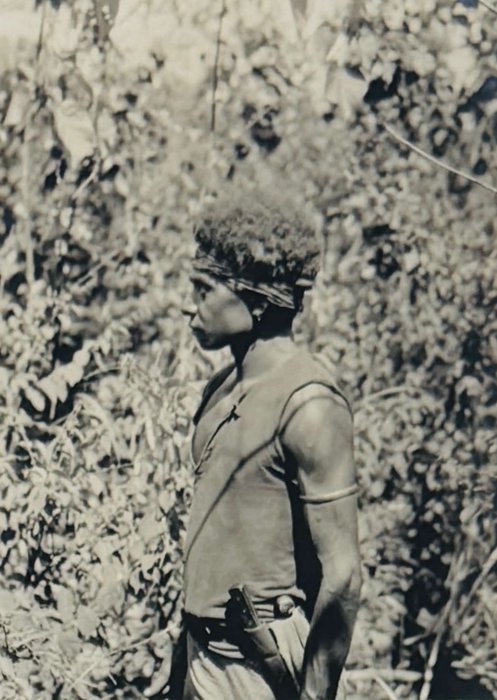
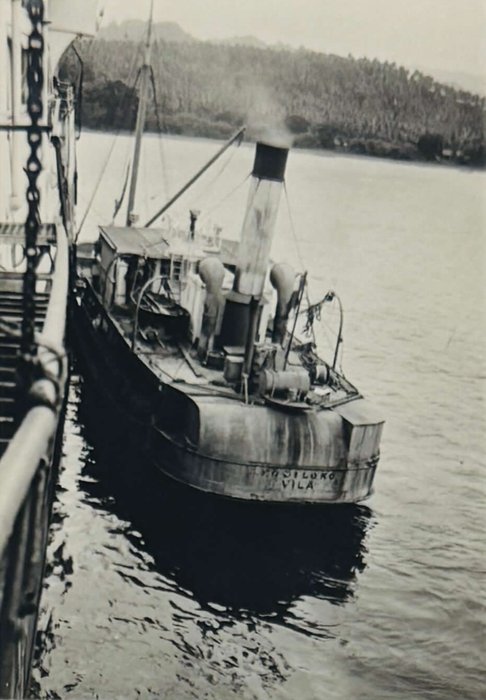
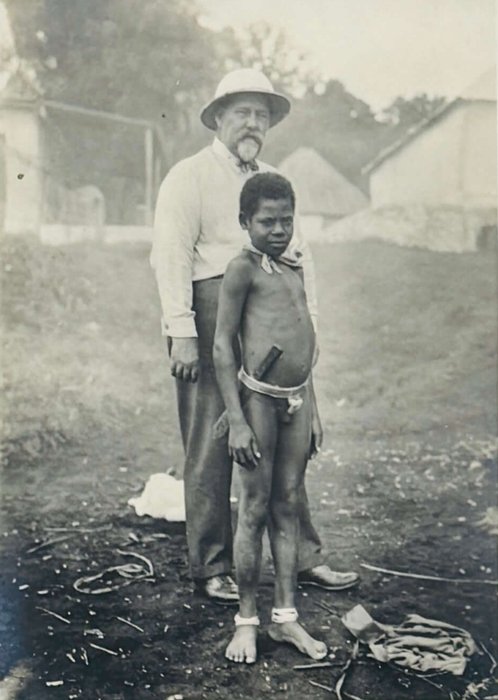
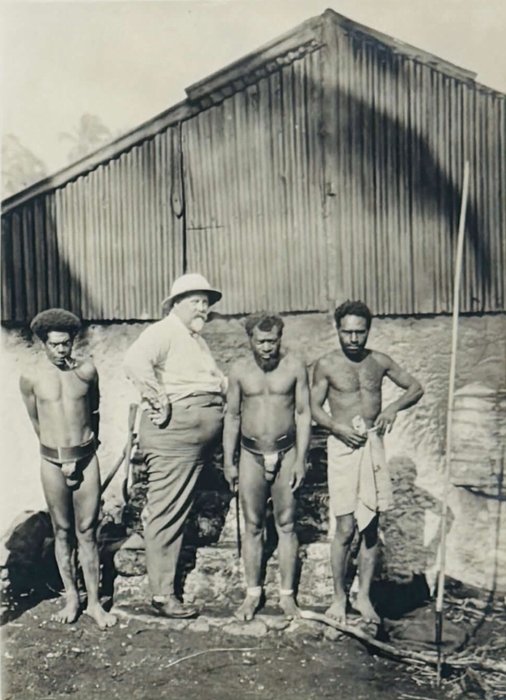
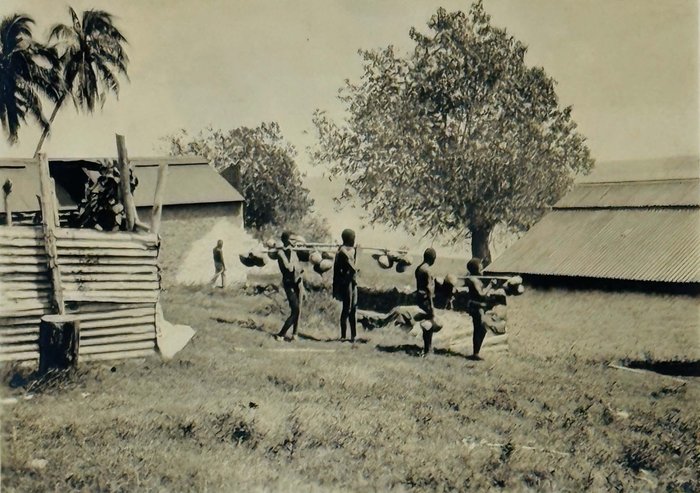


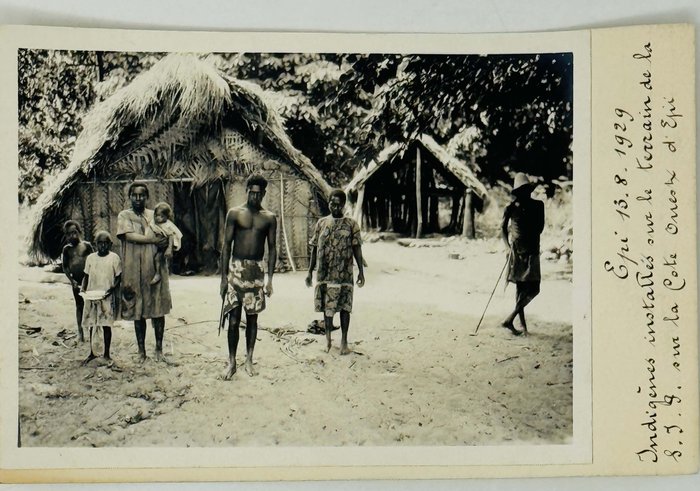
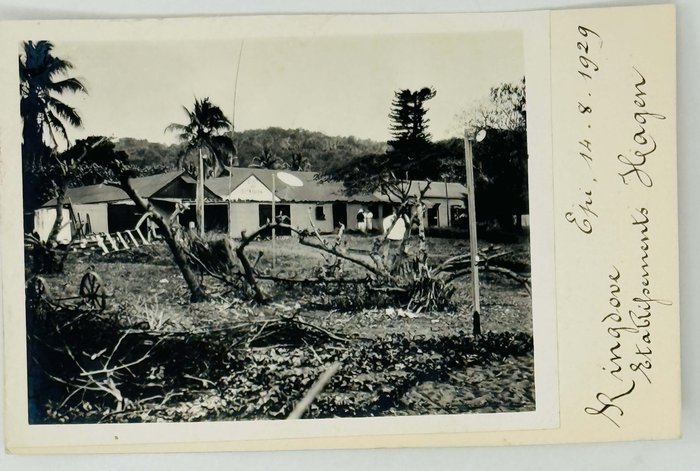
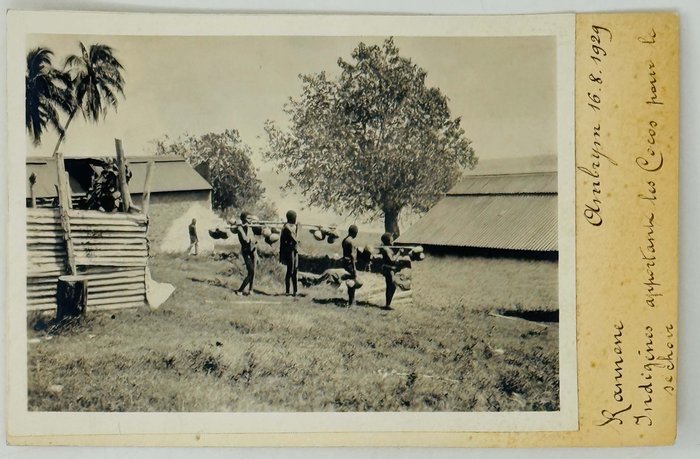
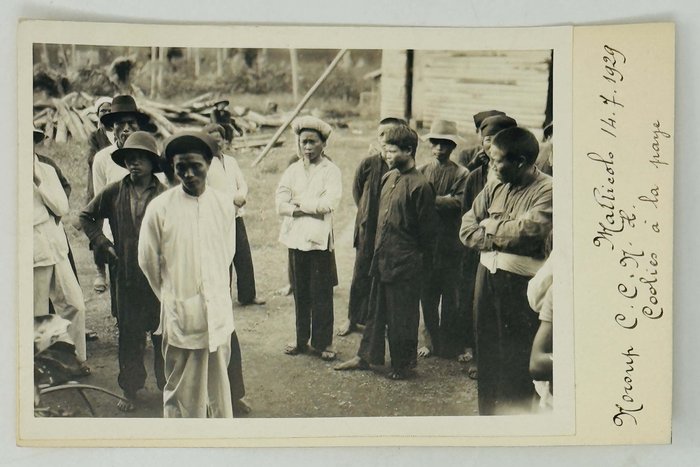
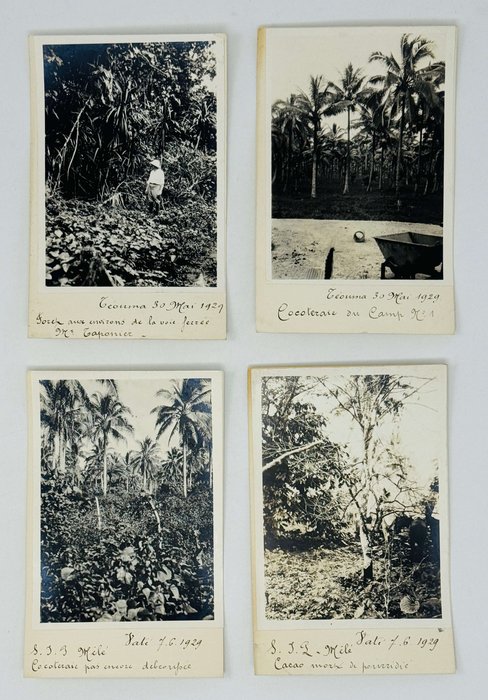
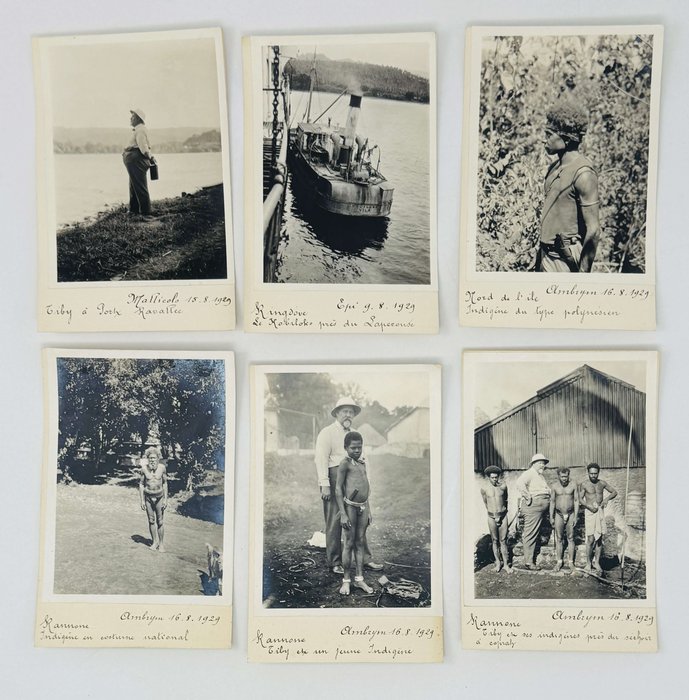
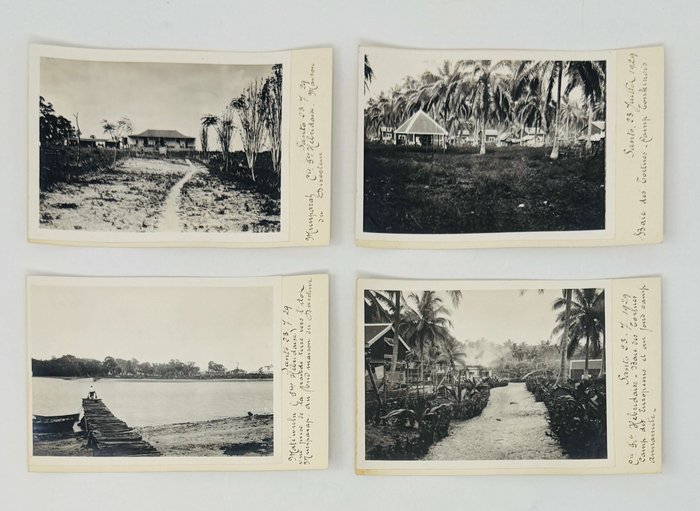
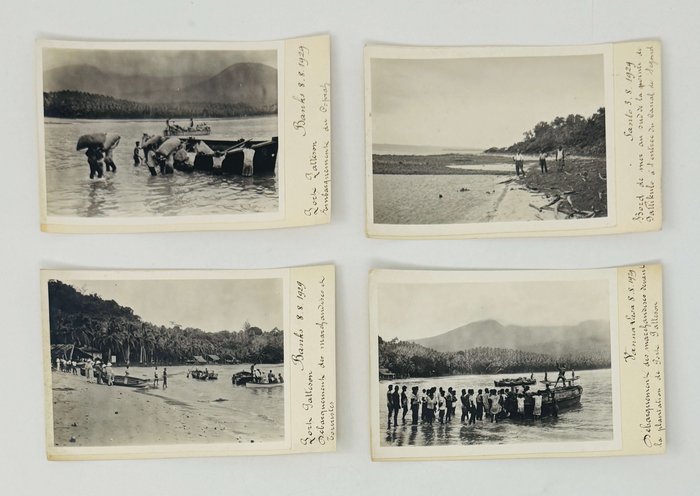
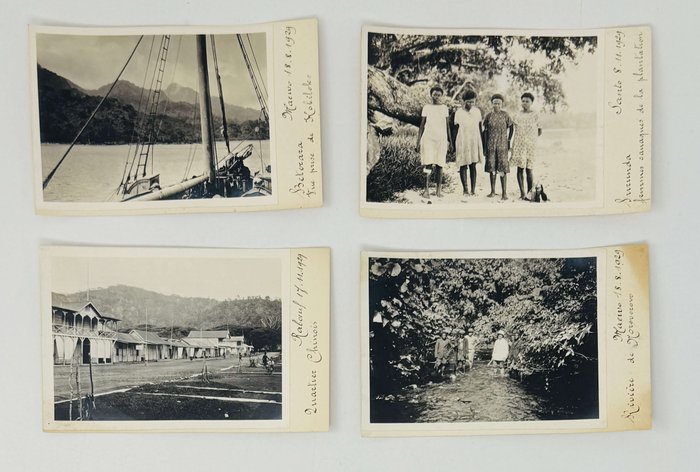
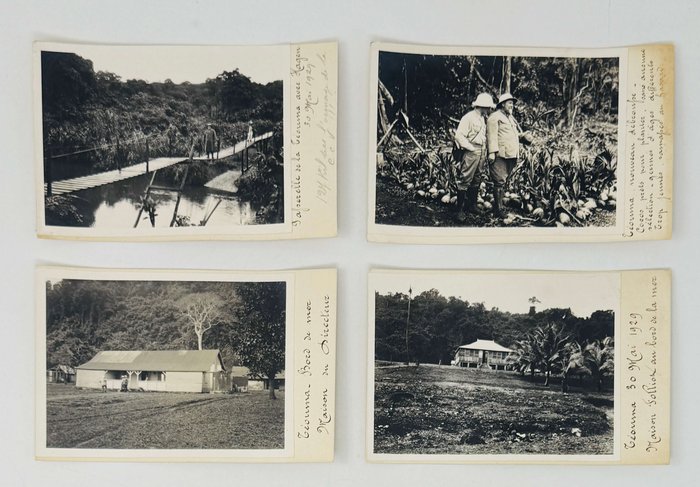
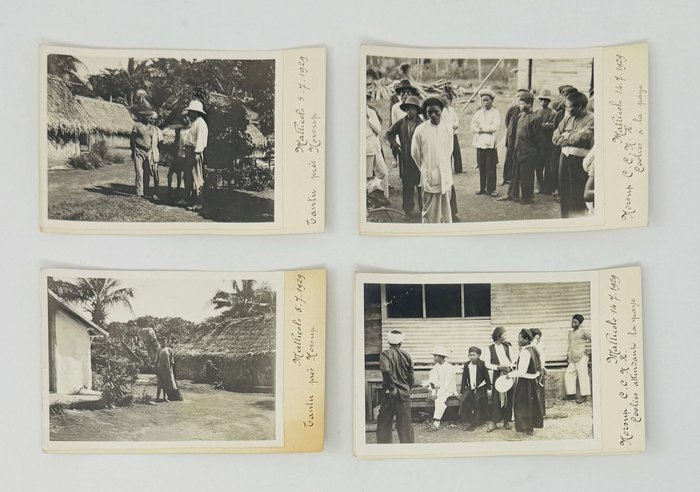

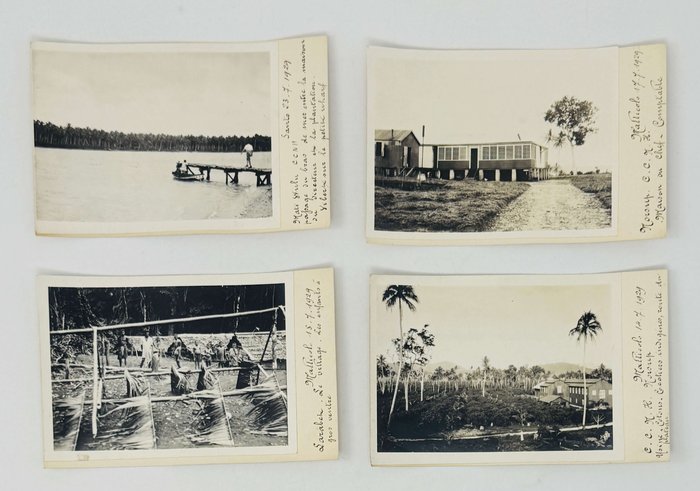
#PE7
1929
Photo sizes ca. 12 x 9 cm (4 ½ x 3 ¼ in). All photos with period ink captions (in English) on the mounts. On all the captions the dates and places are written, as well as details about the image itself. Example of one of the notes on the mount: ‘Kannone. Indigéne en costume national. Ambryn. 16.8.1929’.
Historically important collection of original photographs illustrating Vanuatu, or Les Nouvelles-Hébrides as it was called at the time by the French during the Golden Age of agricultural development of Archipelago. Since the early 1920s, significant efforts were made to transform Vanuatu into an agricultural powerhouse—a goal that met with considerable success. However, this momentum came to a halt in 1931, when the global economic crisis severely impacted French colonies.
According to the captions, the compiler was a French planter, who likely worked by P.R.N.H. de Norsup (called at the time C.C.N.H.), one the largest agricultural companies of the archipelago, and one of the few to survive the economic crisis of 1931. One of the photos show the house of the director of the company on Espiritu Santo island.
The Vanuatu series comprise of over 100 photos, showing the different aspects of life of planters, the locals and the labor. The photos from Vanuatu feature locations of the following islands:
Mallicolo (34 photos, now known as Malakula), Espiritu Santo (19 photos), Téouma (9 photo), Epi (9 photos), Ambrym (8 photos), Maewo (7 photos), Vaté (6 photos, now known as Efate, the location of WWI US Army base), Vanua Lava (6 photo), Pentecost (3 photos), and Kingdove (2 photos) - documenting activities of planters on most of the large islands of the archipelago.
All of Vanuatu photos are from the period between May and August of 1929, when the photographer was on the location. The photos, taken in Papua New Guinea include 9 from Rabaul, taken in November of 1929, after the party has returned from Vanuatu. One photo from PNG series shows the headquarters of Chinese Nationalist Party Kuo Ming Tang in Rabaul.
Originally the development of the land has started on island Vaté, but by 1920s they have reached the outlying islands: this process is shown in present collection.
At least 22 photos showing natives of Vanuatu in their settlements, in front of their dwellings with children, as well as being used as a labor, helping to load copra on canoes and barques, carrying coconuts etc.
At least 10 photos include the images of Tiby Hagen (1880-1947), born in New Caledonia, he is best known for operating several plantations and trading posts in New Caledonia, Vanuatu and the Solomon Islands. The activity of his ‘Société des Établissements Hagen’ on Vanuatu’s Epi island is less documented, than his activities on Solomon Islands (which are captured in ‘The Hagen Album’ held at Archives of New Caledonia). Apart from the image of the headwaters of the company, the photos show Tiby interacting with the locals, operating a canoe and being carried across the lake by two locals. Other planters photographed are called Kerr, Sassari, many are unnamed.
In 1912 French colonial official Marcel Saint-Germain wrote, that the vision for Nouvelles-Hébrides was ‘to create a ‘southern France’ in the archipelago—a counterpart to English-speaking Australia and an antipodean reflection of the mother country”. This vision included bringing 3,000 to 4,000 settler families to the islands, to whom approximately 50,000 hectares would be granted through free or low-cost concessions.
In 1920s this plan has started to be implemented. At the time more than 50 000 native inhabitants have lived on the islands, compared with 710 French settlers and 200 people from Britain. The native population however was rapidly decreasing, due to diseases, brought by Europeans (as it was over 60 000 in 1910). The main problem for the development of the land remained the labor: the Europeans didn’t succeed in their efforts to make local population work for them, so the decision of bringing outside labor force was raised. In 1919, the French Governor of the Pacific, Marie Casimir Joseph Guyon, responding to the demands of settlers and local trading houses, obtained from the General Government of Indochina the right to recruit Vietnamese workers locally, and the first official convoy bringing 145 Vietnamese arrived in Port Vila in 1921.
Most of the Tonkinese workers came from the poor and overpopulated regions of the Red River Delta, Nam Dinh and Thai Binh. A total of 21,915 of them were brought to the archipelago between 1921 and 1940, many stayed after renewing their contracts. Between 1920 and 1930, the area cultivated by colonization doubled, from 8,000 hectares to just over 16,000 hectares. This decade is generally regarded as a golden age for the French planers of archipelago as in 1931 the economic crisis has killed the dream of ‘Southern France’. One of the main reasons for that was economical: the price of price of agricultural commodities fell by an average of 4 to 1, the Vietnamese labour started to leave the islands, many companies have bankrupted. Ministry of the Colonies has lobbied for the coffee price to be frozen in order for the colonists to maintain afloat.
At least 12 photos show the Vietnamese labor on the island, their working conditions, the receiving of the salary, two photos shows the Vietnamese village on Malakula. Couple of photos captioned as ‘Payday for the coolies’ (derogatory term for the people of South-Asian origin). The relationships between the laborers and the planters were not always smooth: In 1928, a fire completely destroyed the warehouse of Maison Ballande, which organized the recruitment of Vietnamese labor. It caused the deaths of 16 people, serious injuries to 20 others, and nearly 10 million francs in damage. Although never officially confirmed, all reports from the time attributed the accident to a malicious act by Indochinese workers. In 1931, a settler, Chevalier, was killed by his workers on a Santo plantation: the guillotine was then brought from Nouméa to publicly execute six of those responsible.
When the crisis of 1931 hit, the reliance on native labour became crucial for the planters to survive. Edmond Caillard, head of the P.R.N.H. at Norsup, who had always had major problems recruiting Melanesian labor, noted this in his own report in 1931: "At the moment, we are using indigenous labor, among whom we have observed a very clear tendency to offer their services since the crisis."
Overall, historically important collection of photographs illustrating the life of Vanuatu at the peak of its economic development in 1920s. The extensive photo collections of photos of Vanuatu from this period are very rare, especially in such quality.

